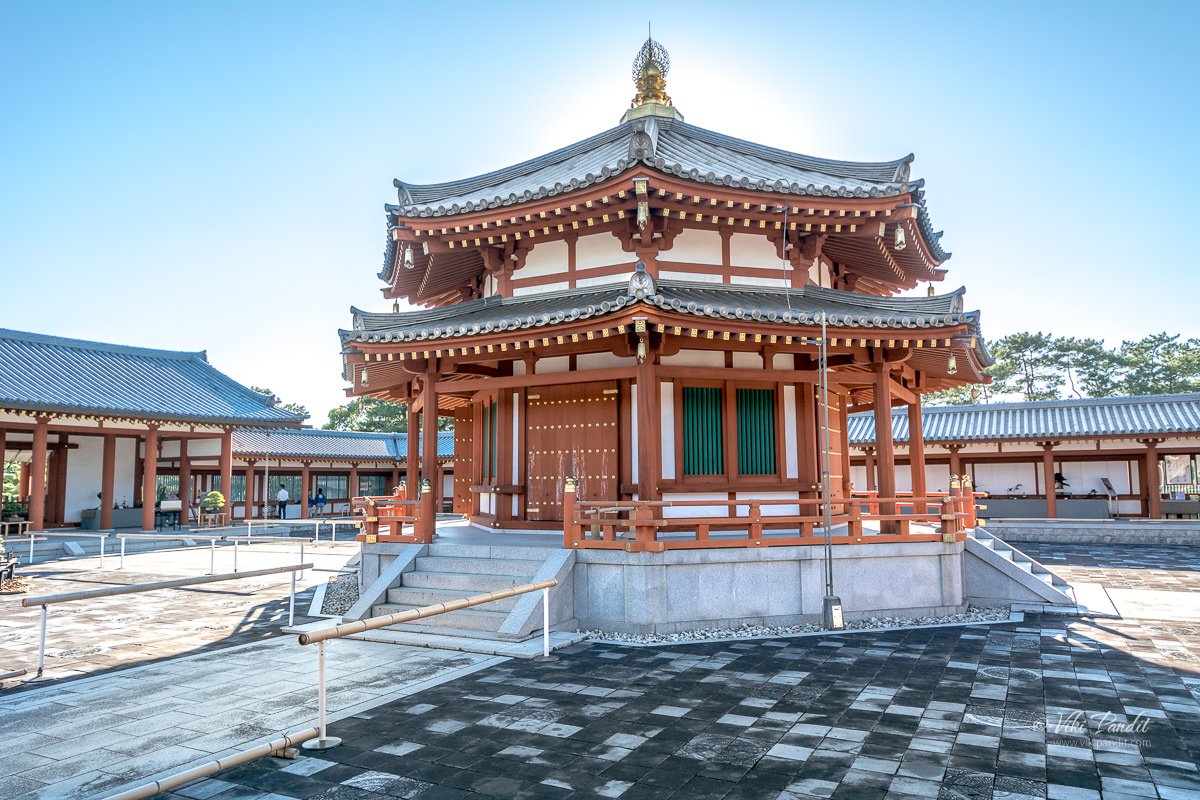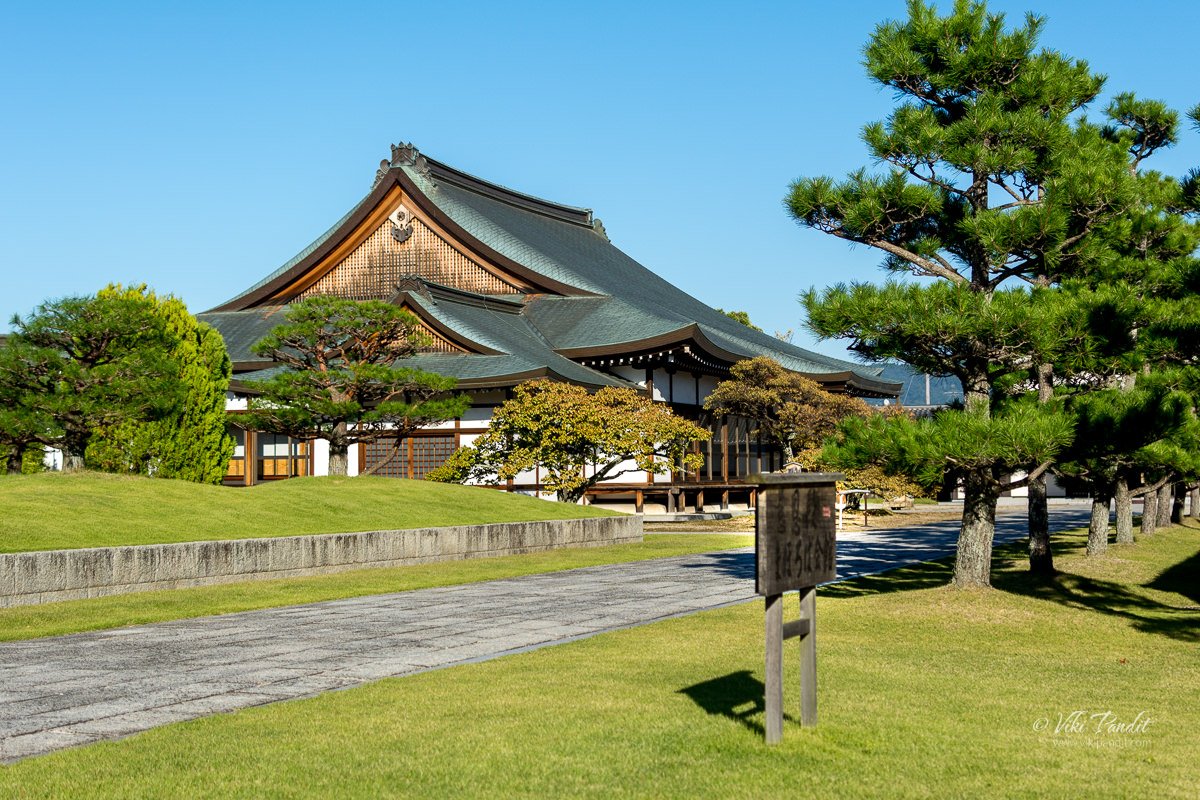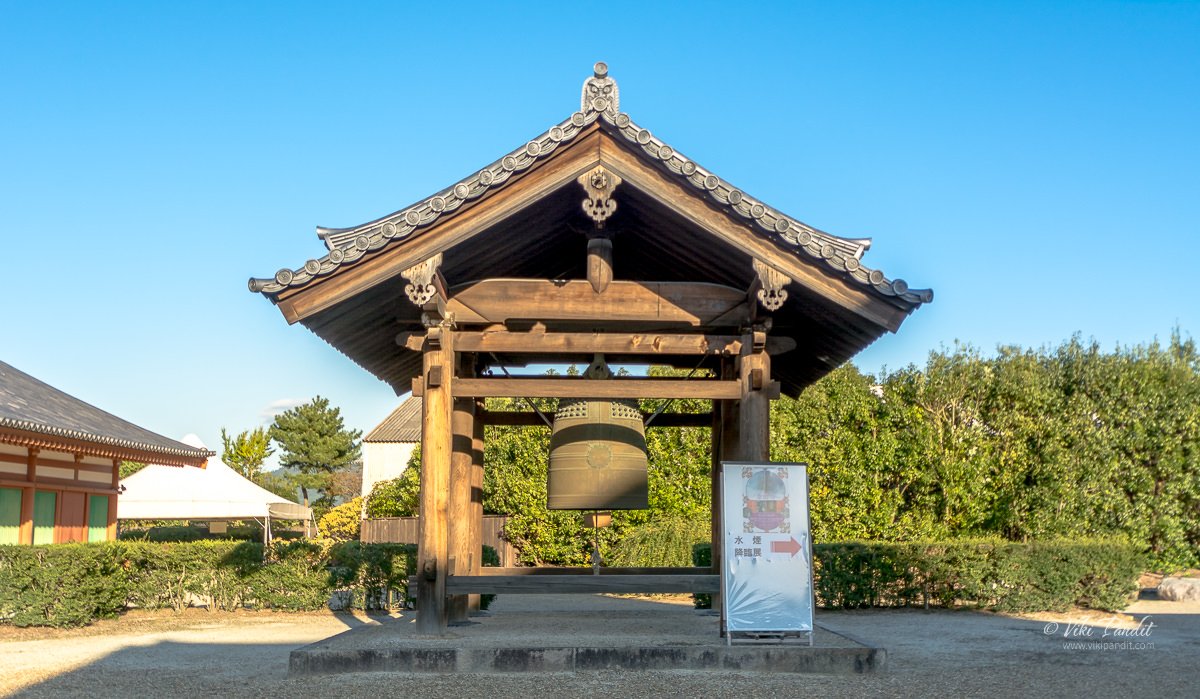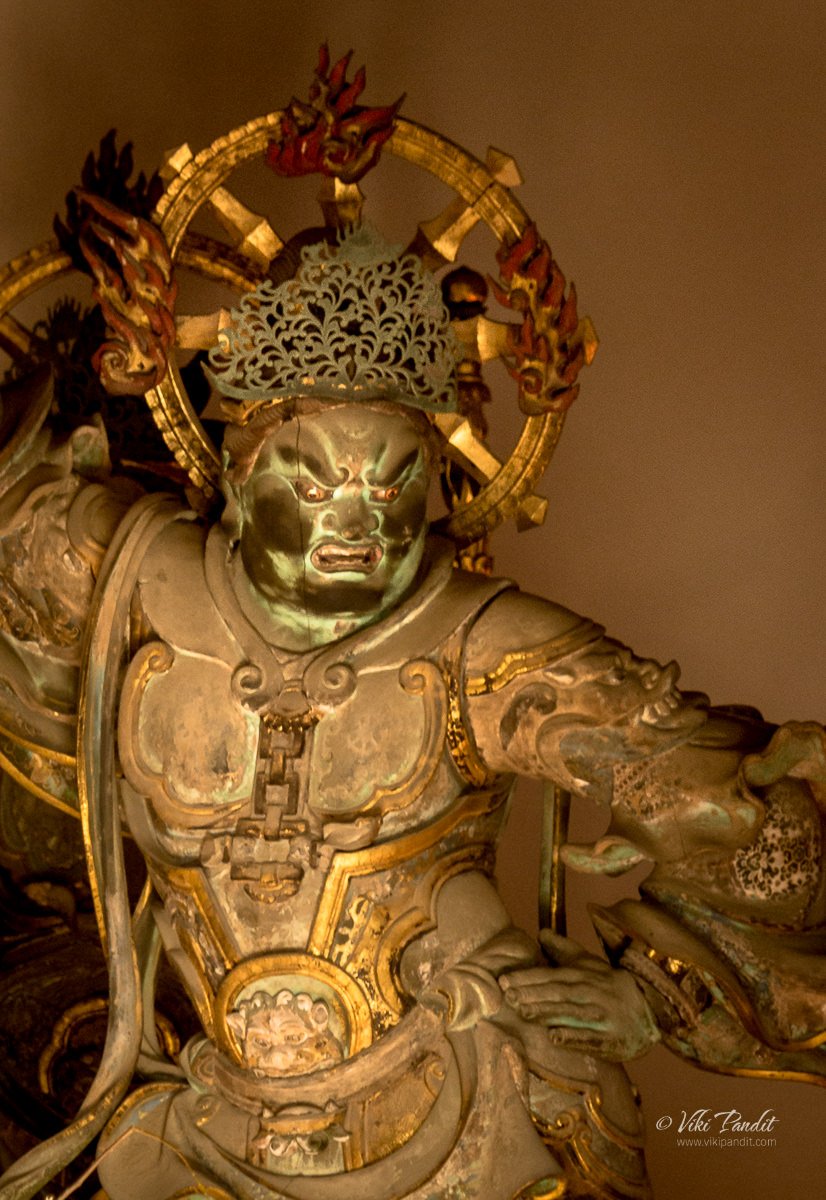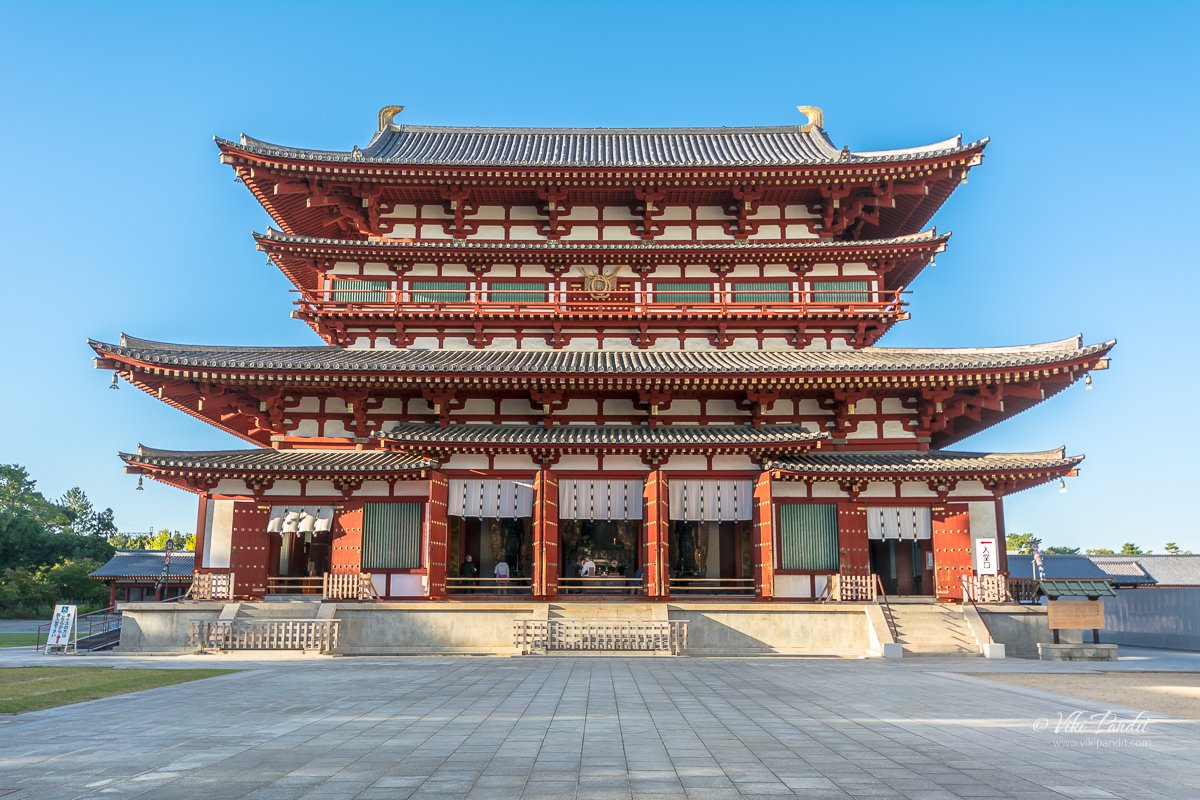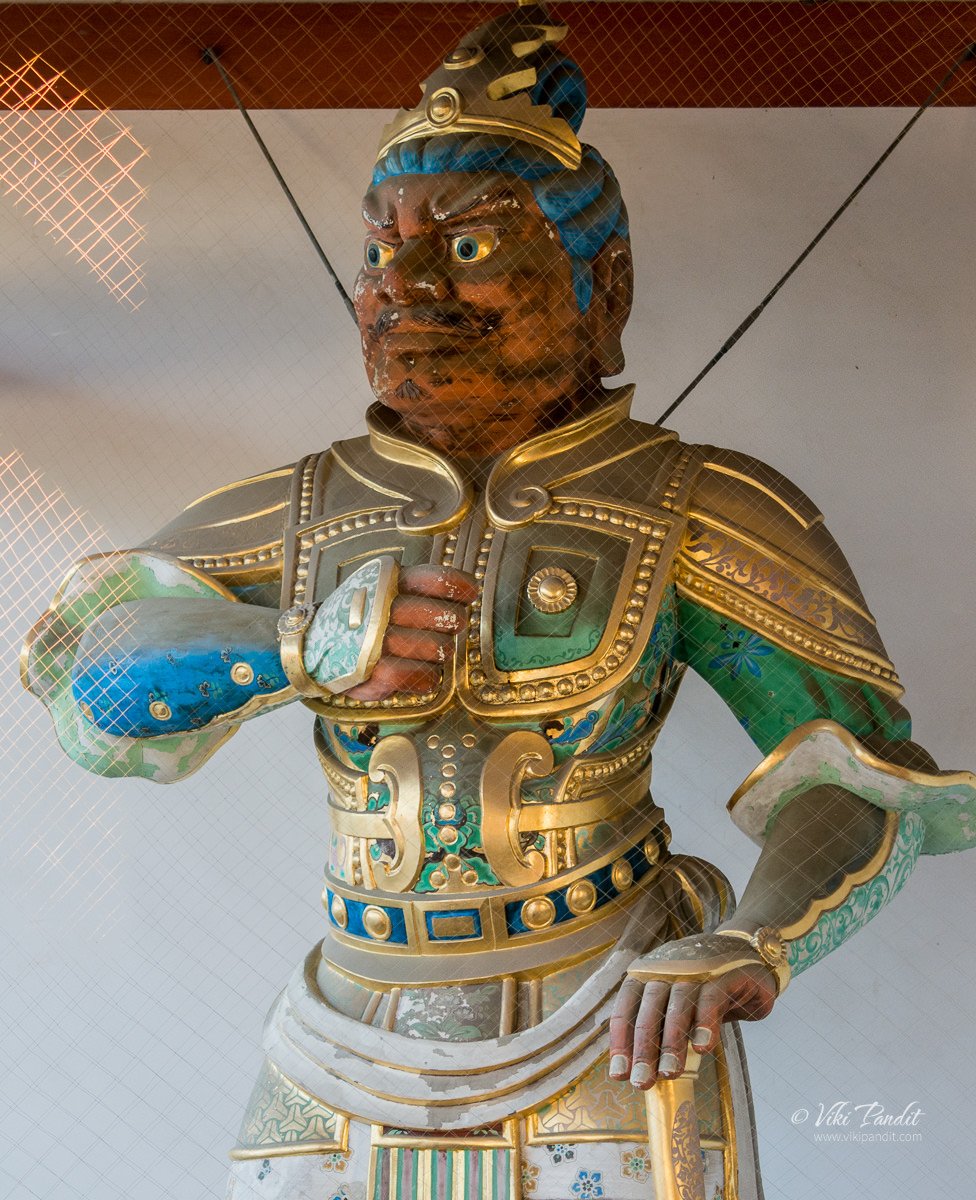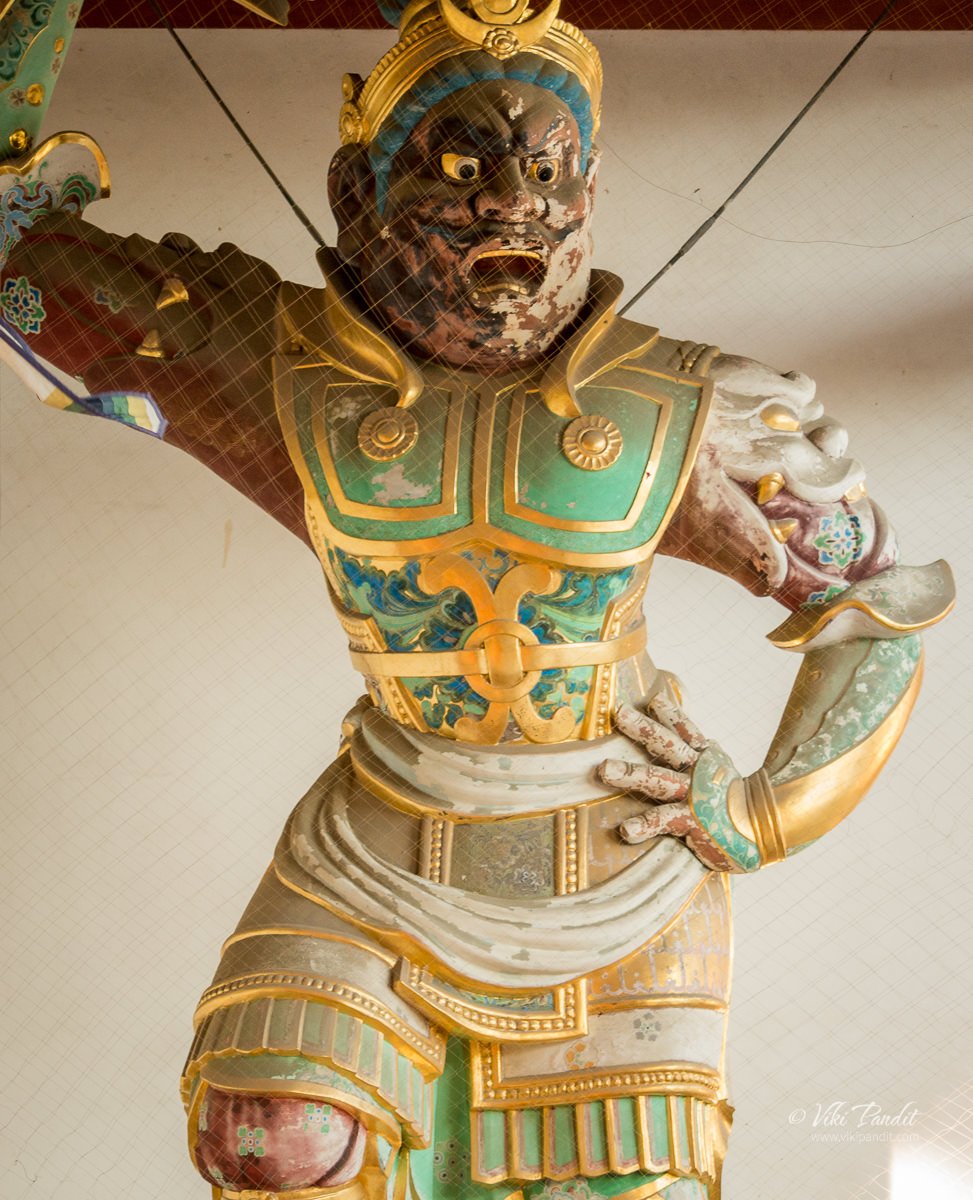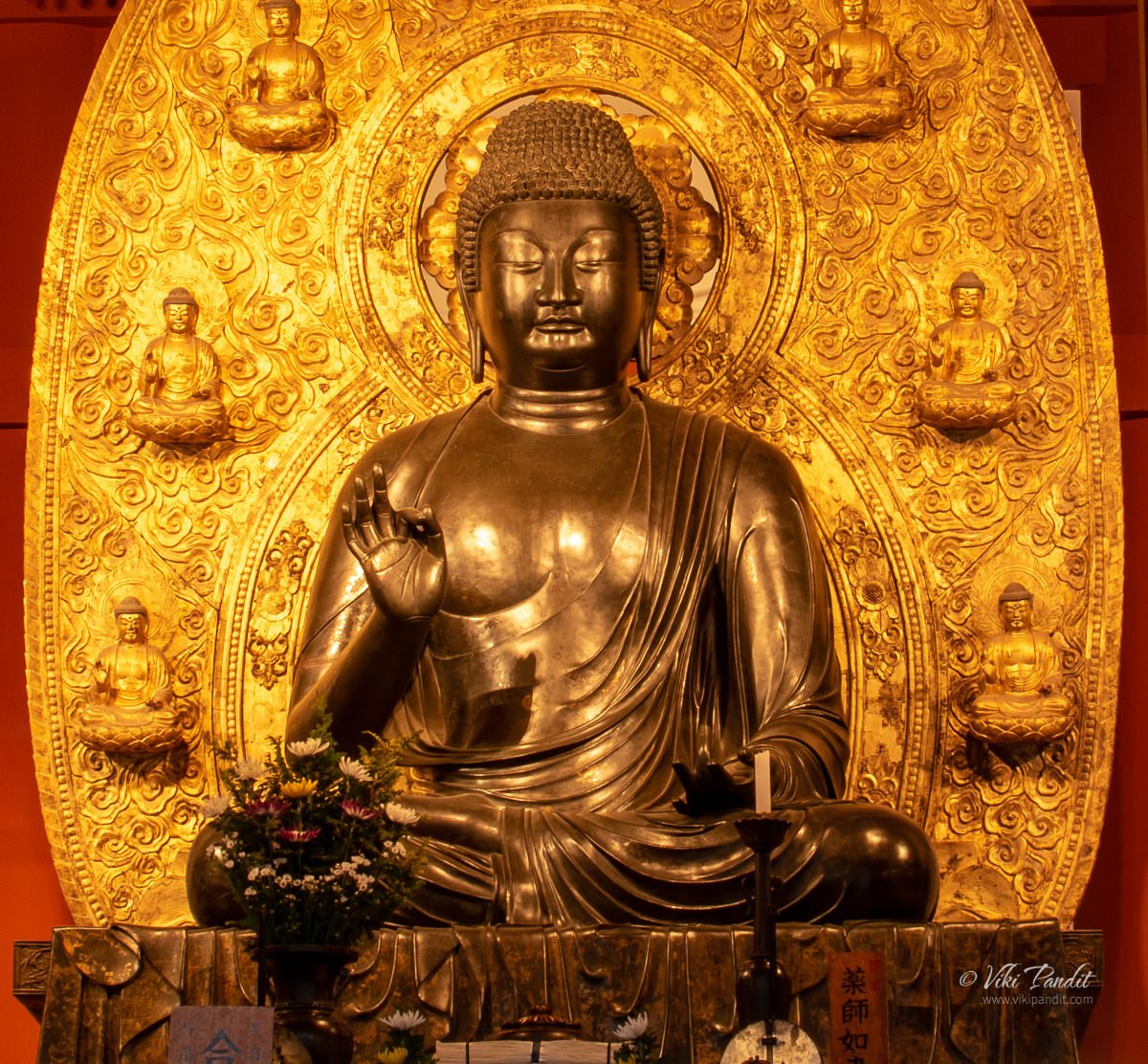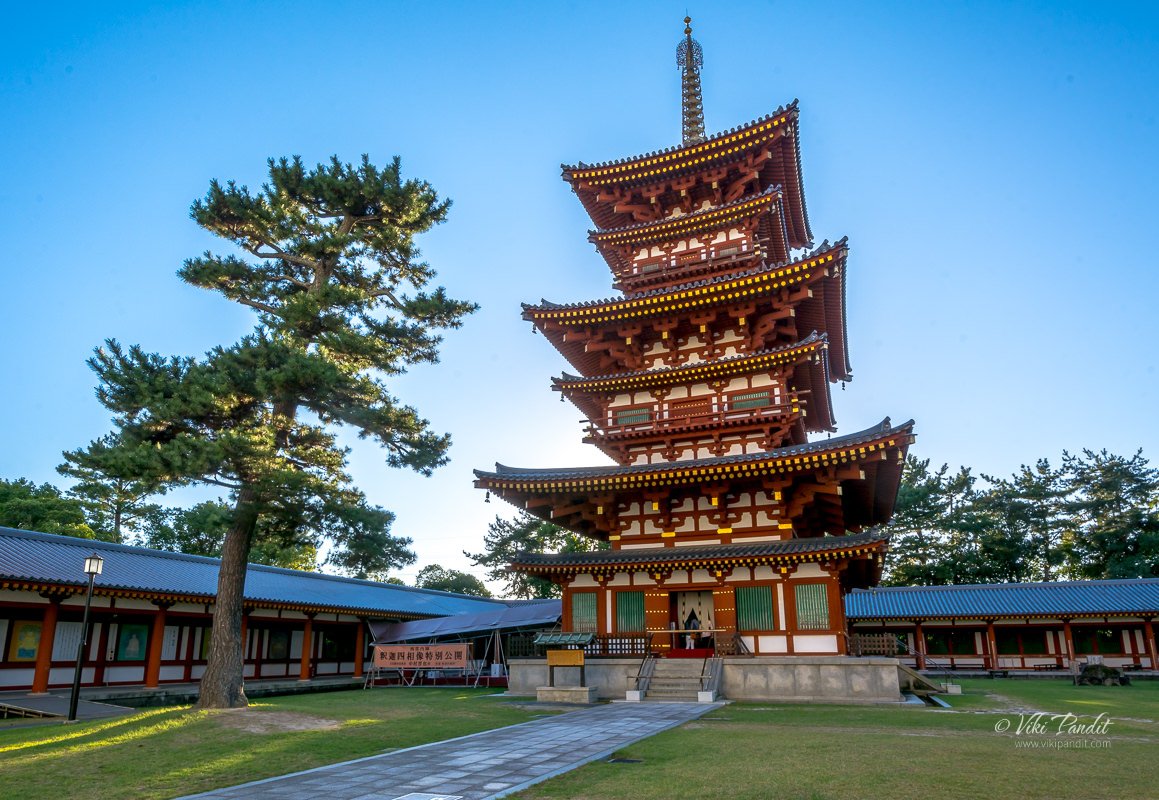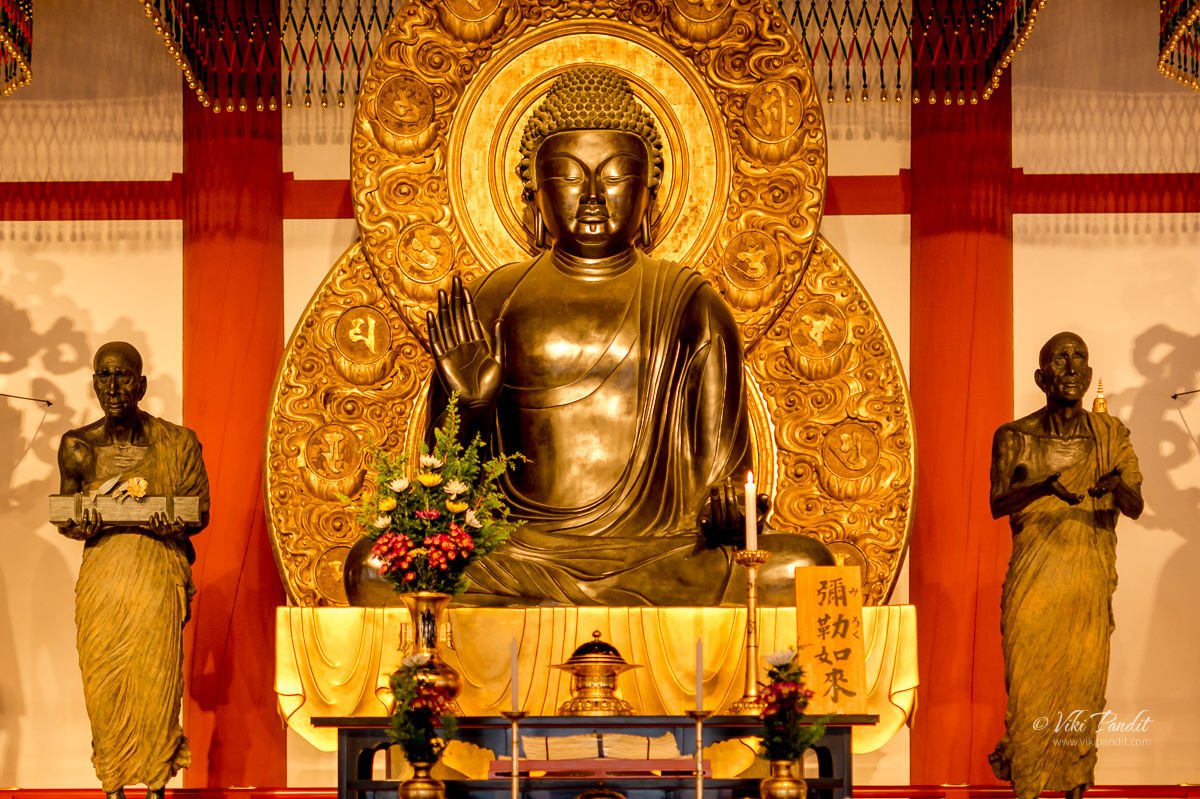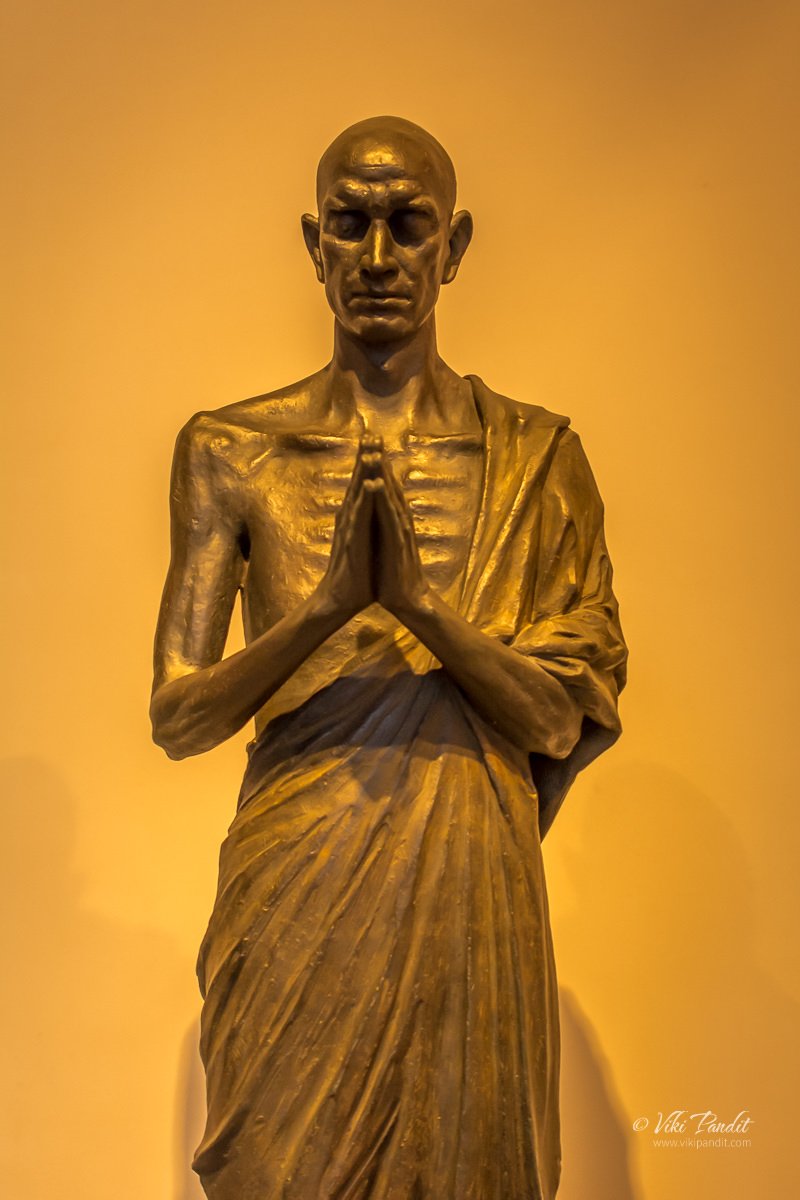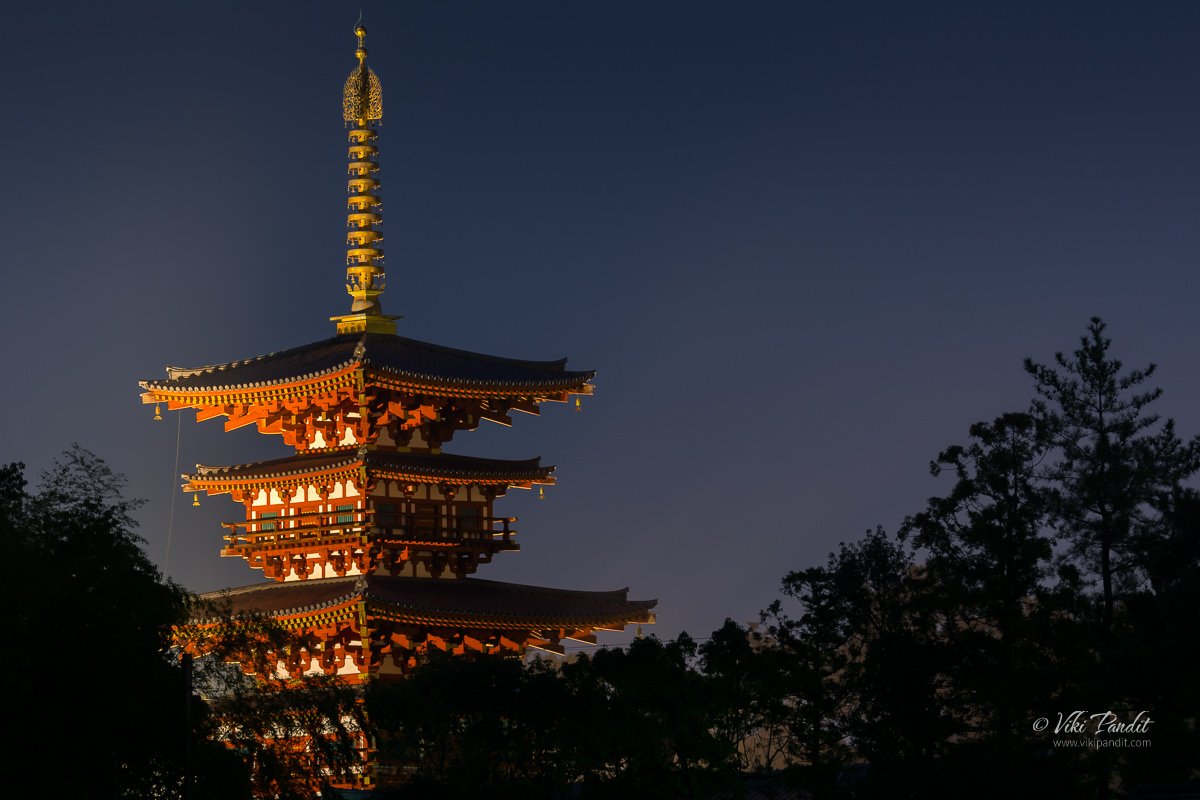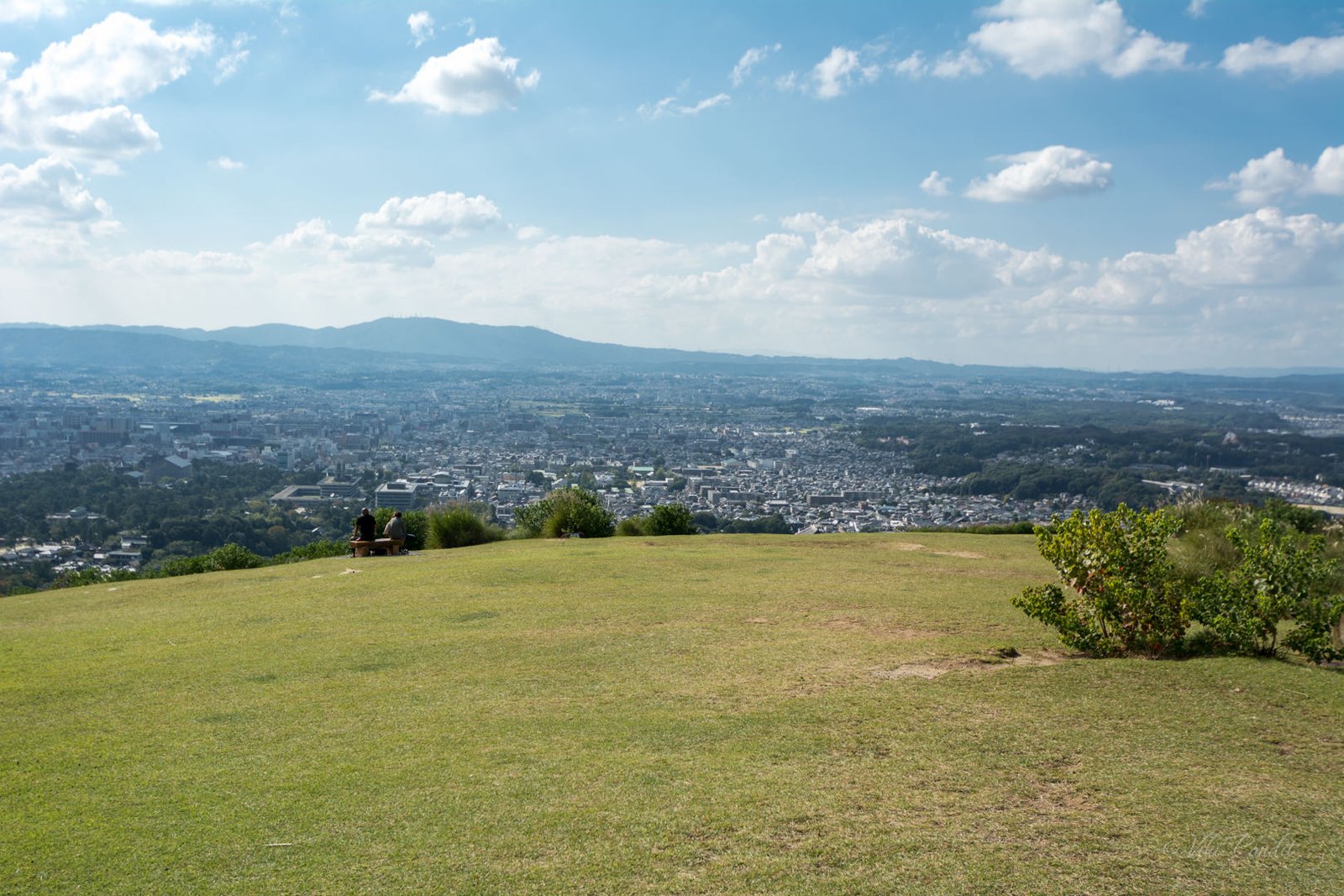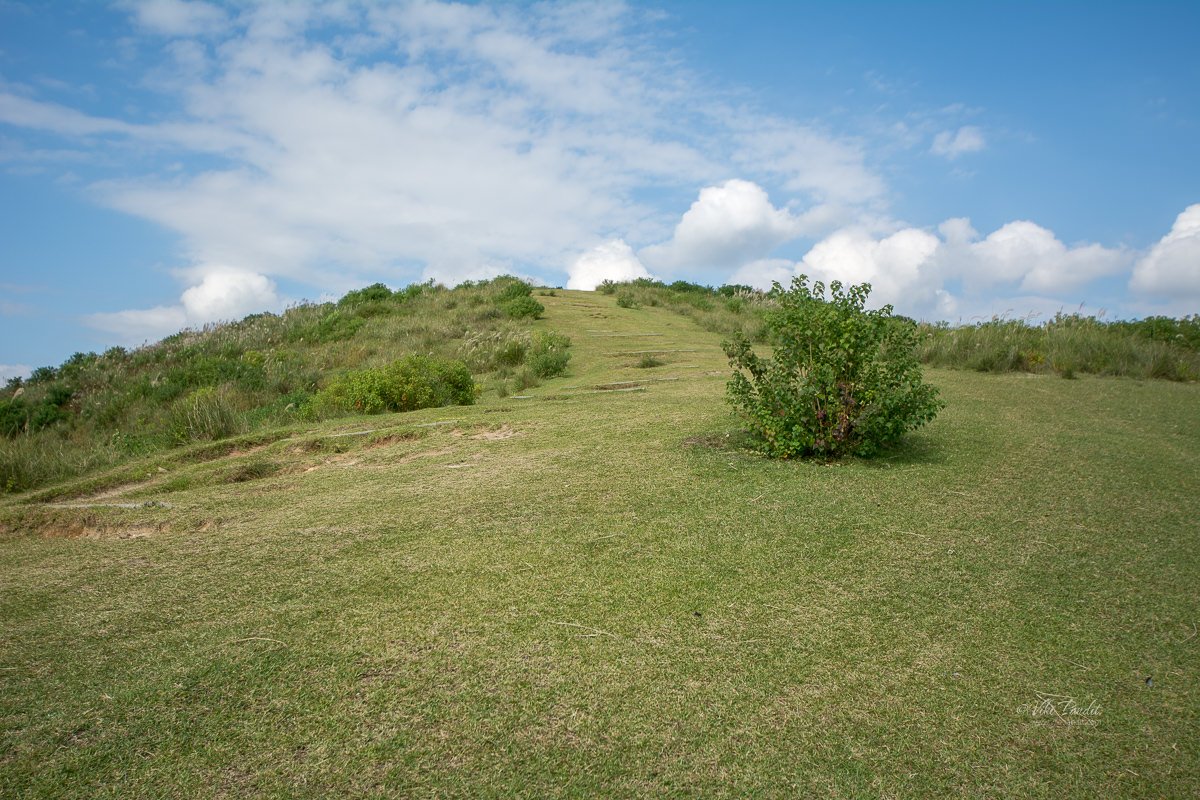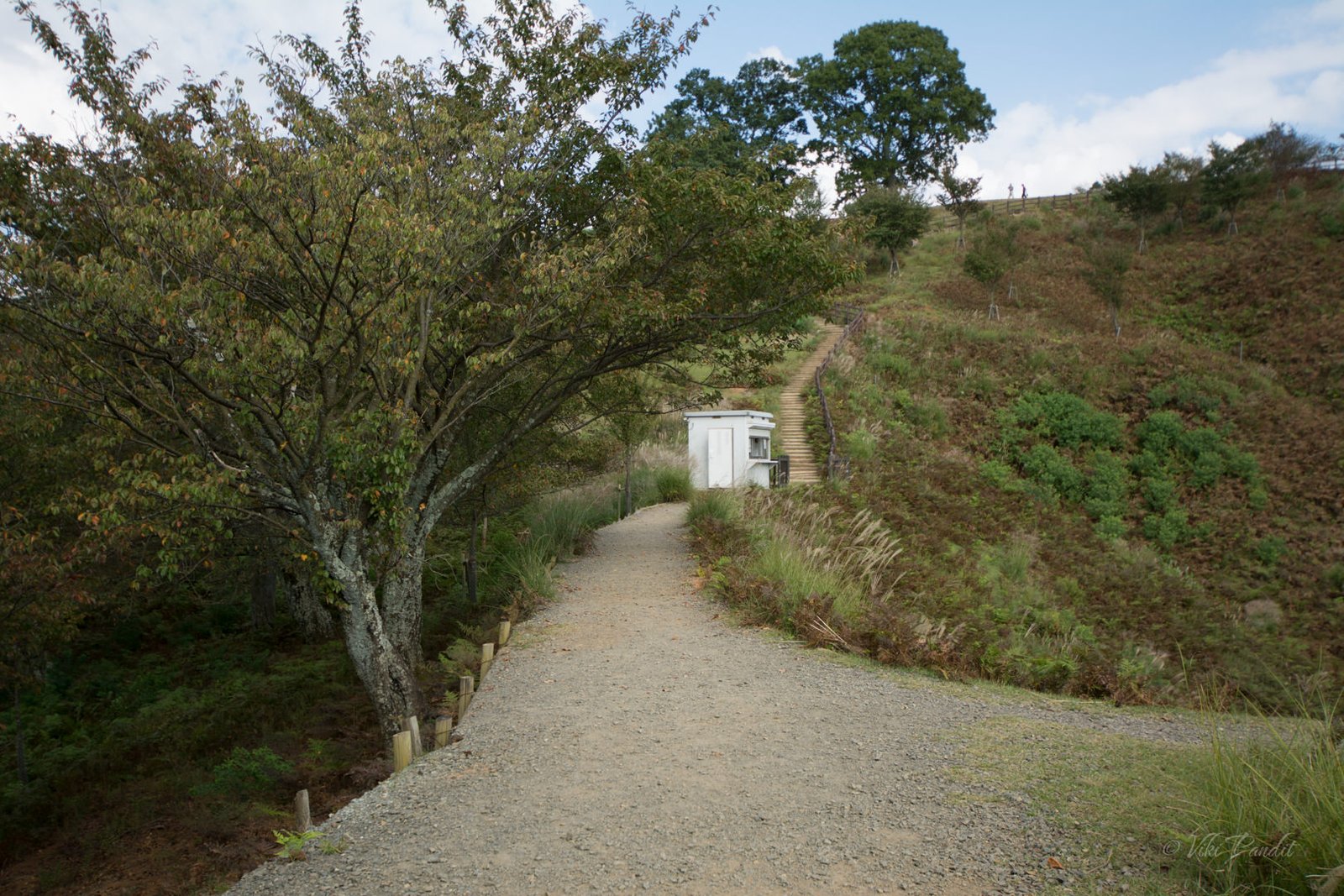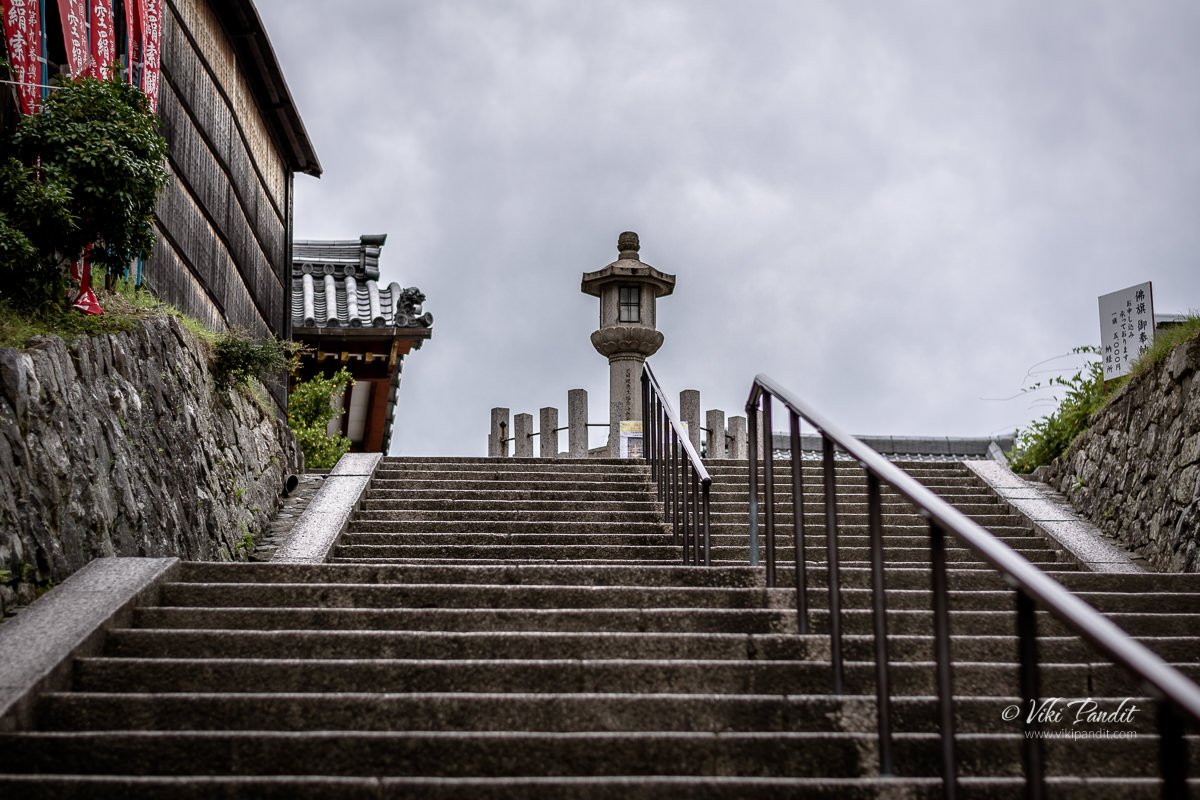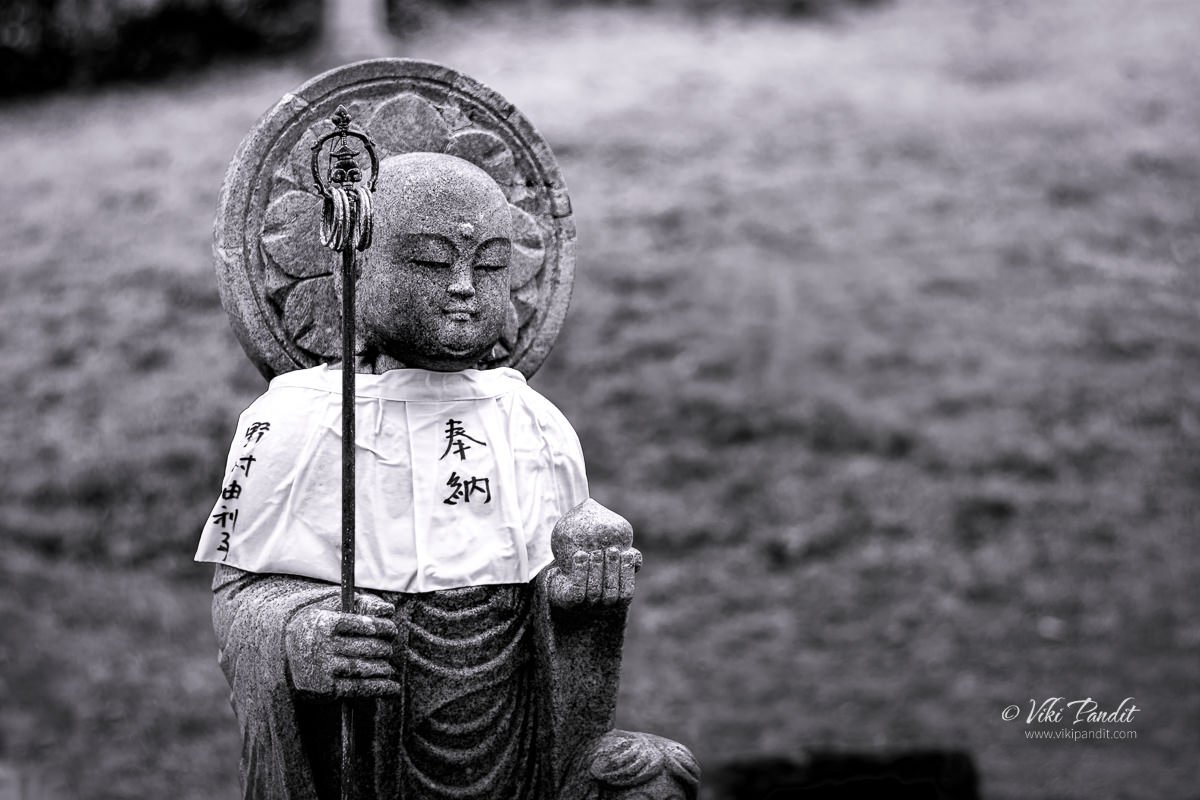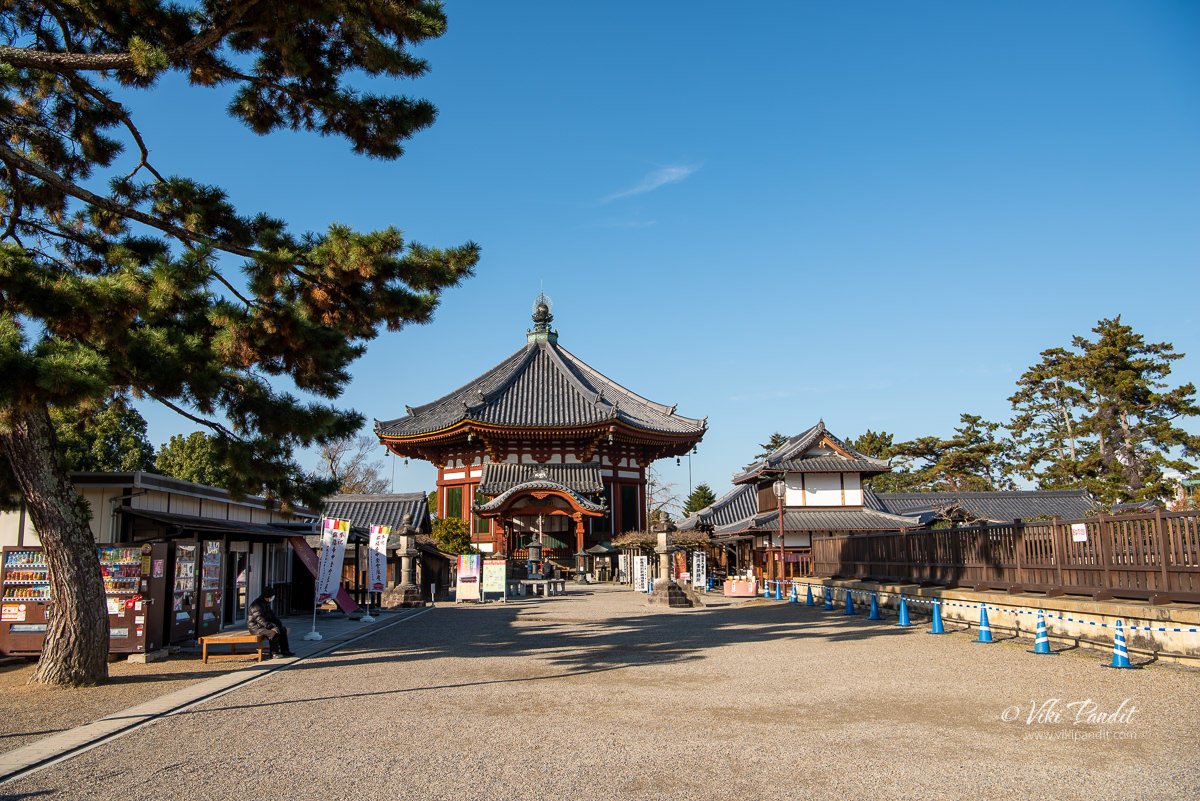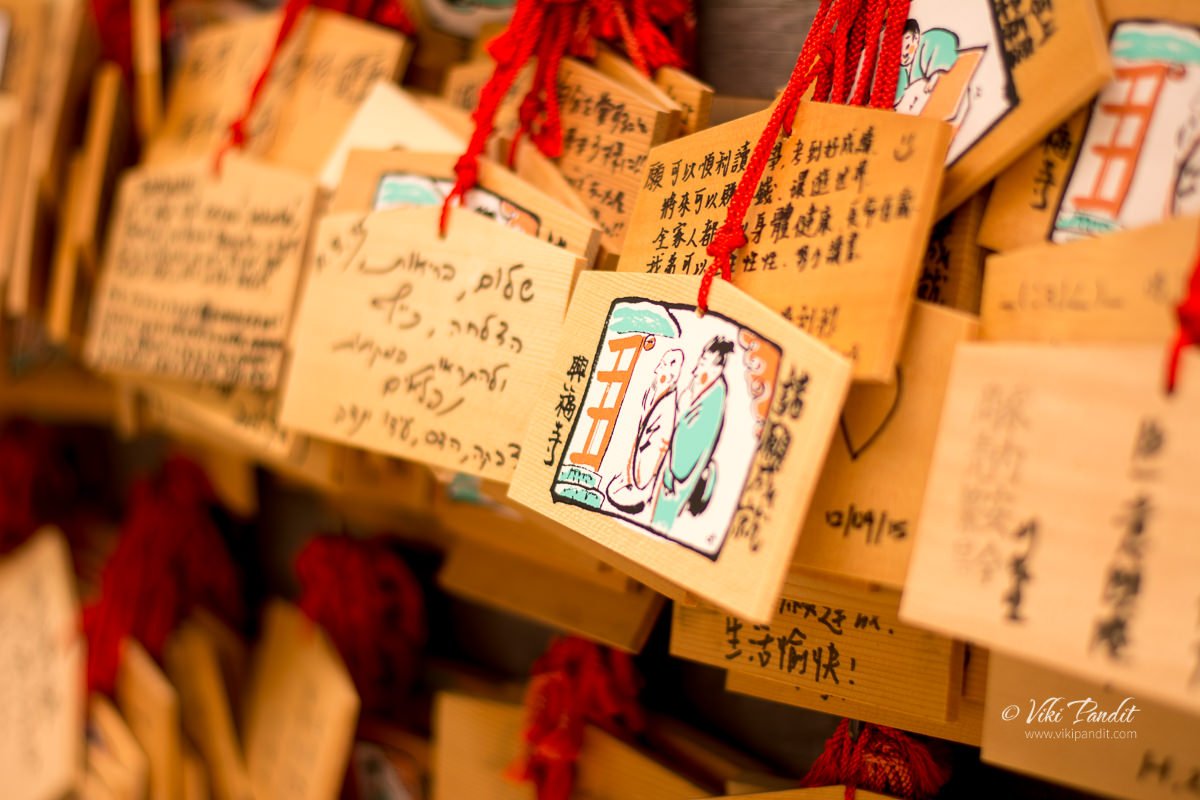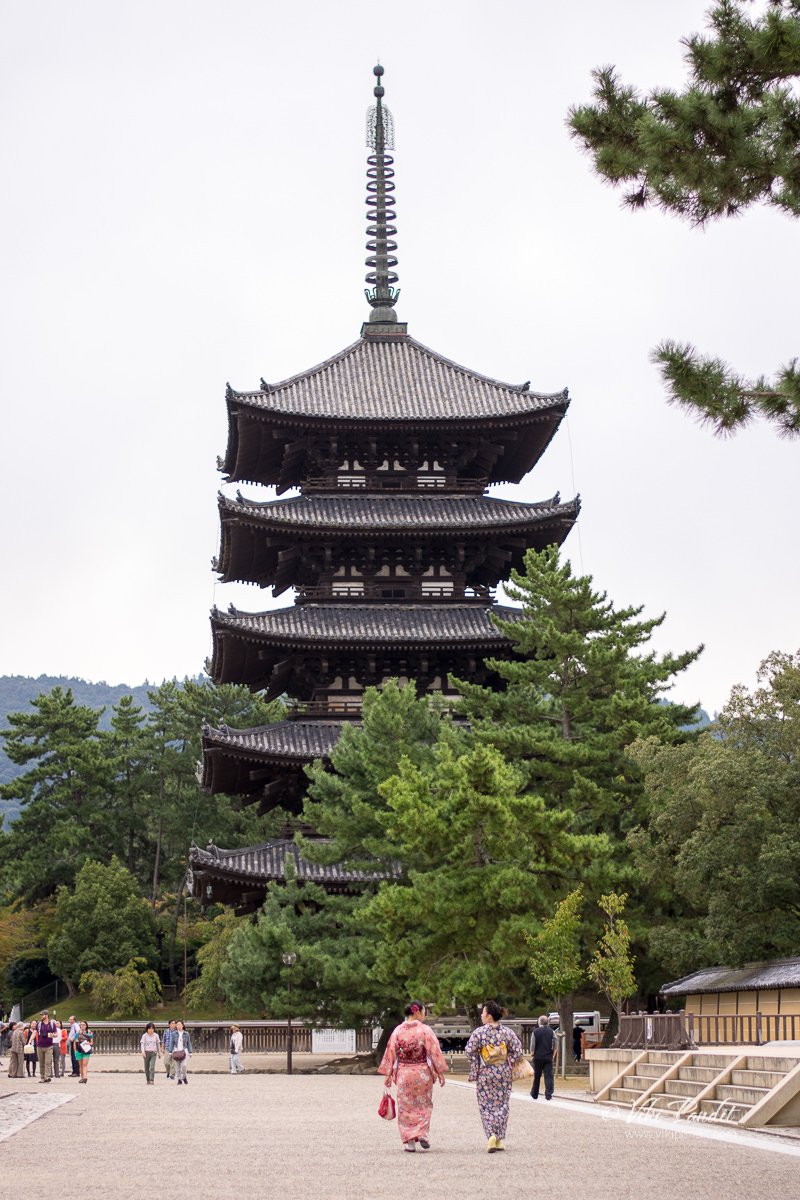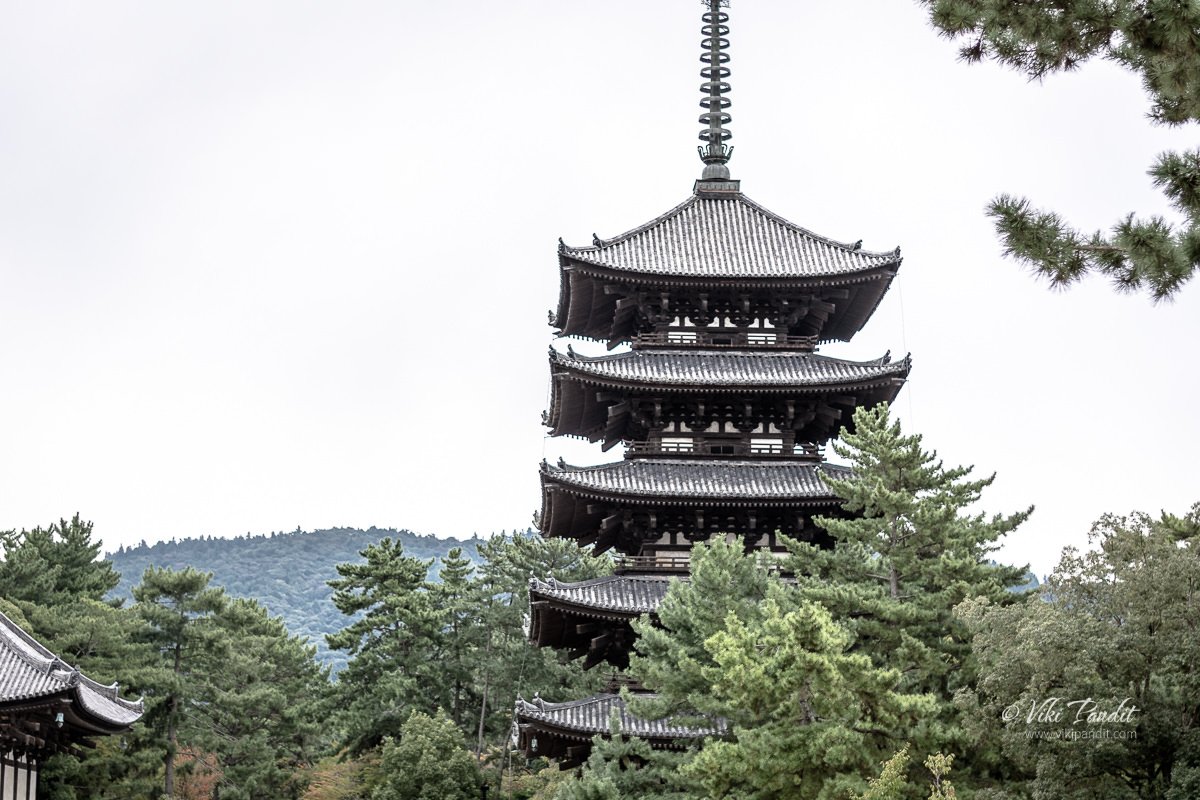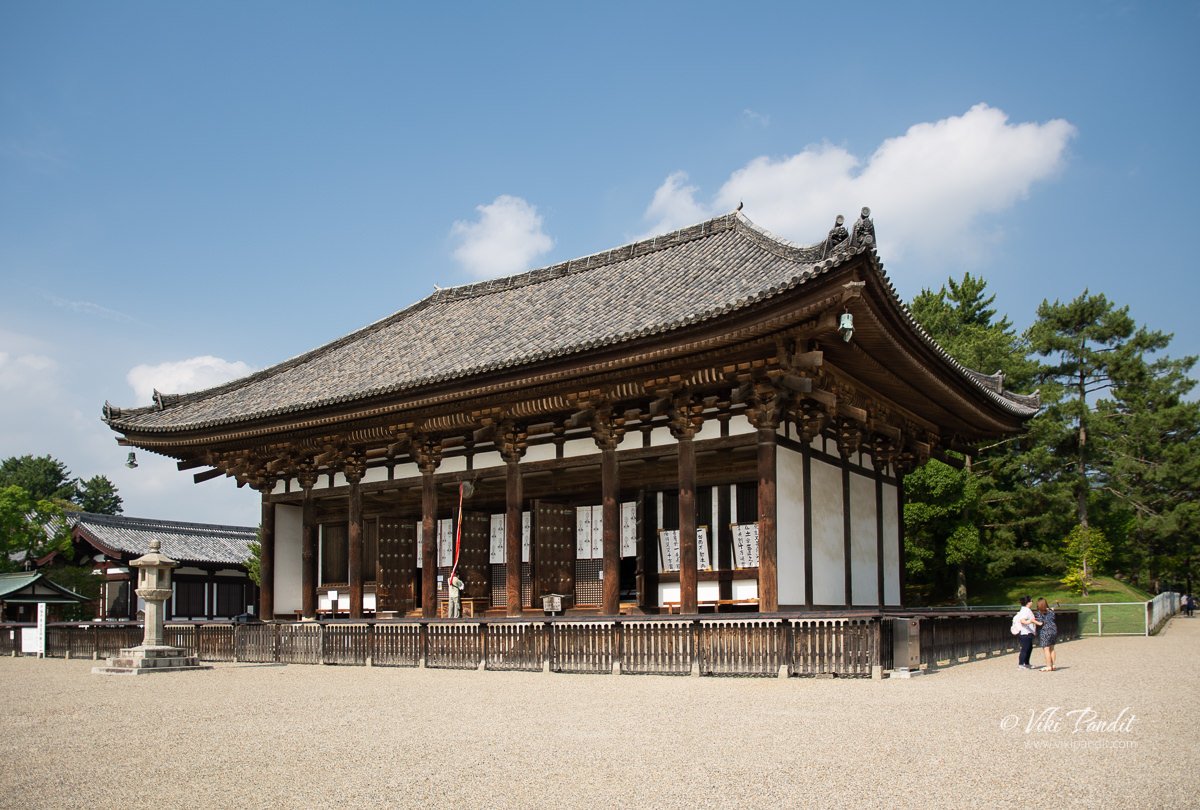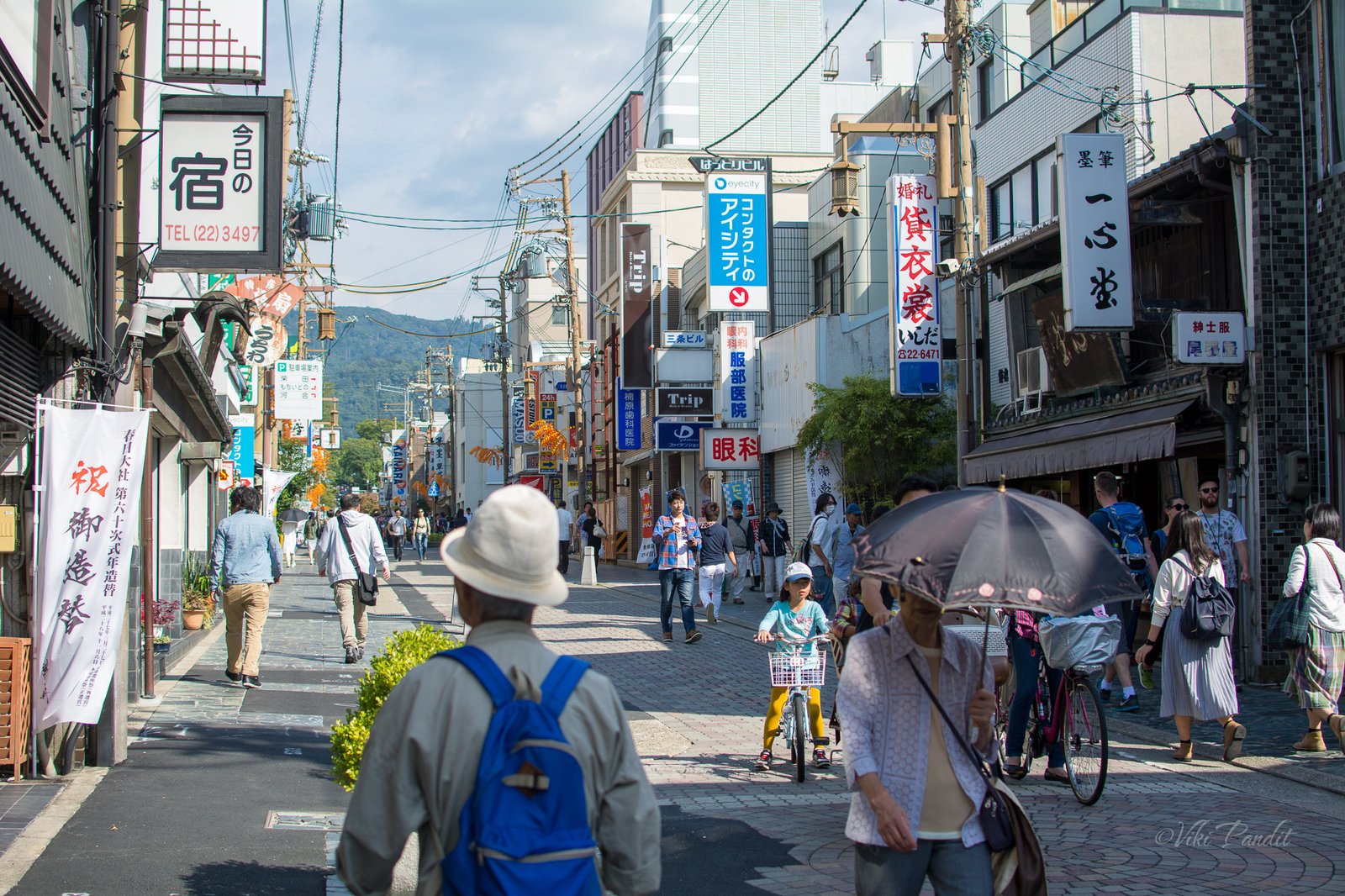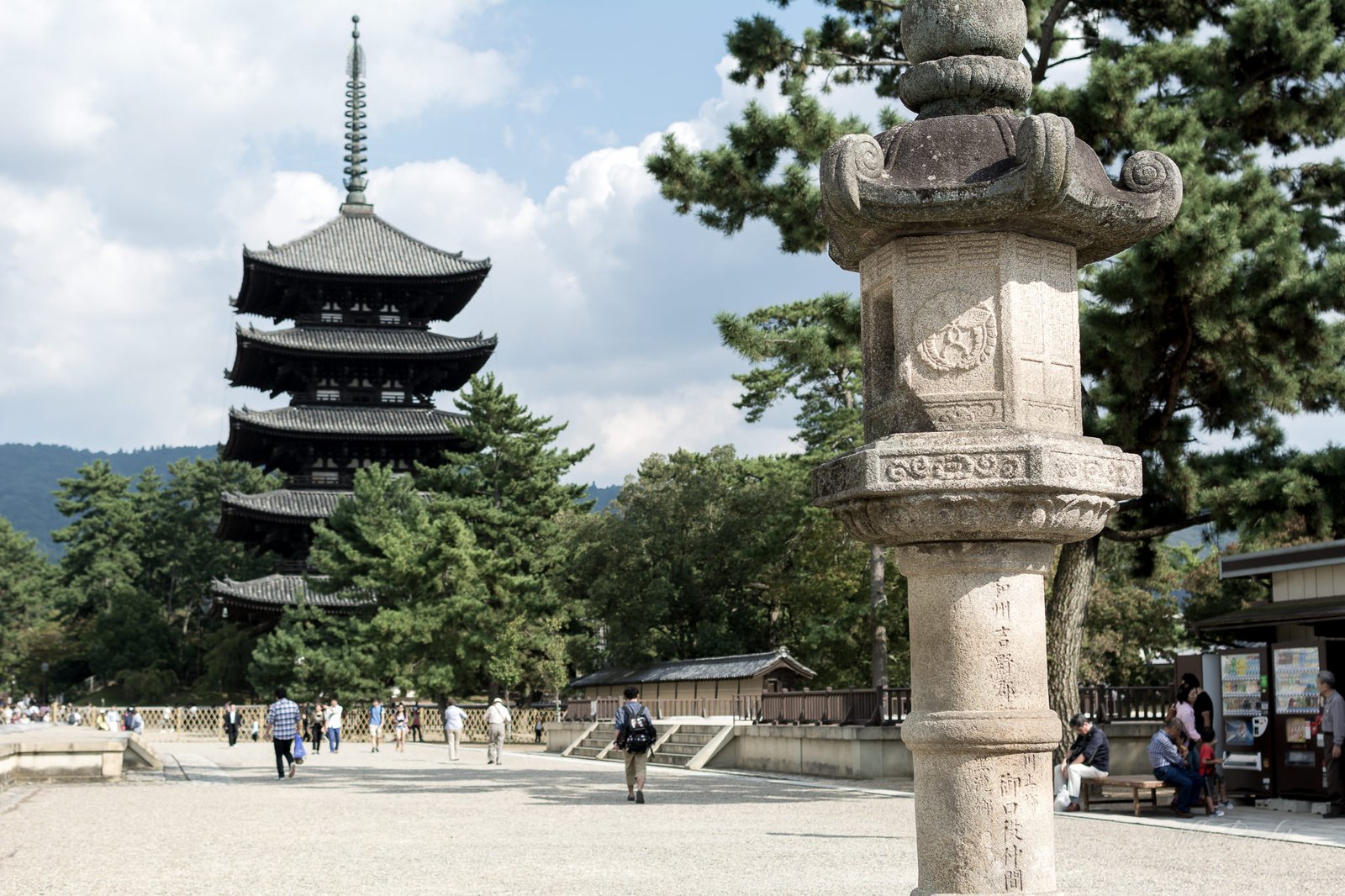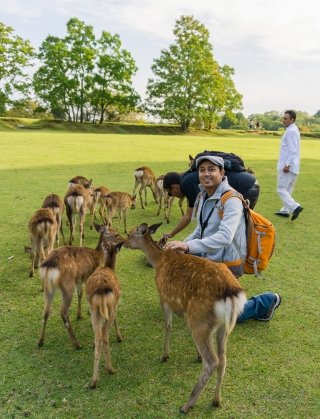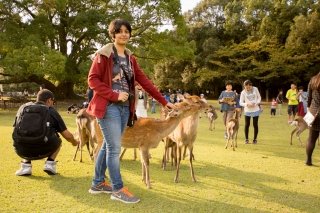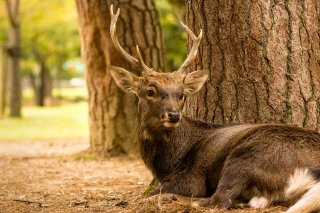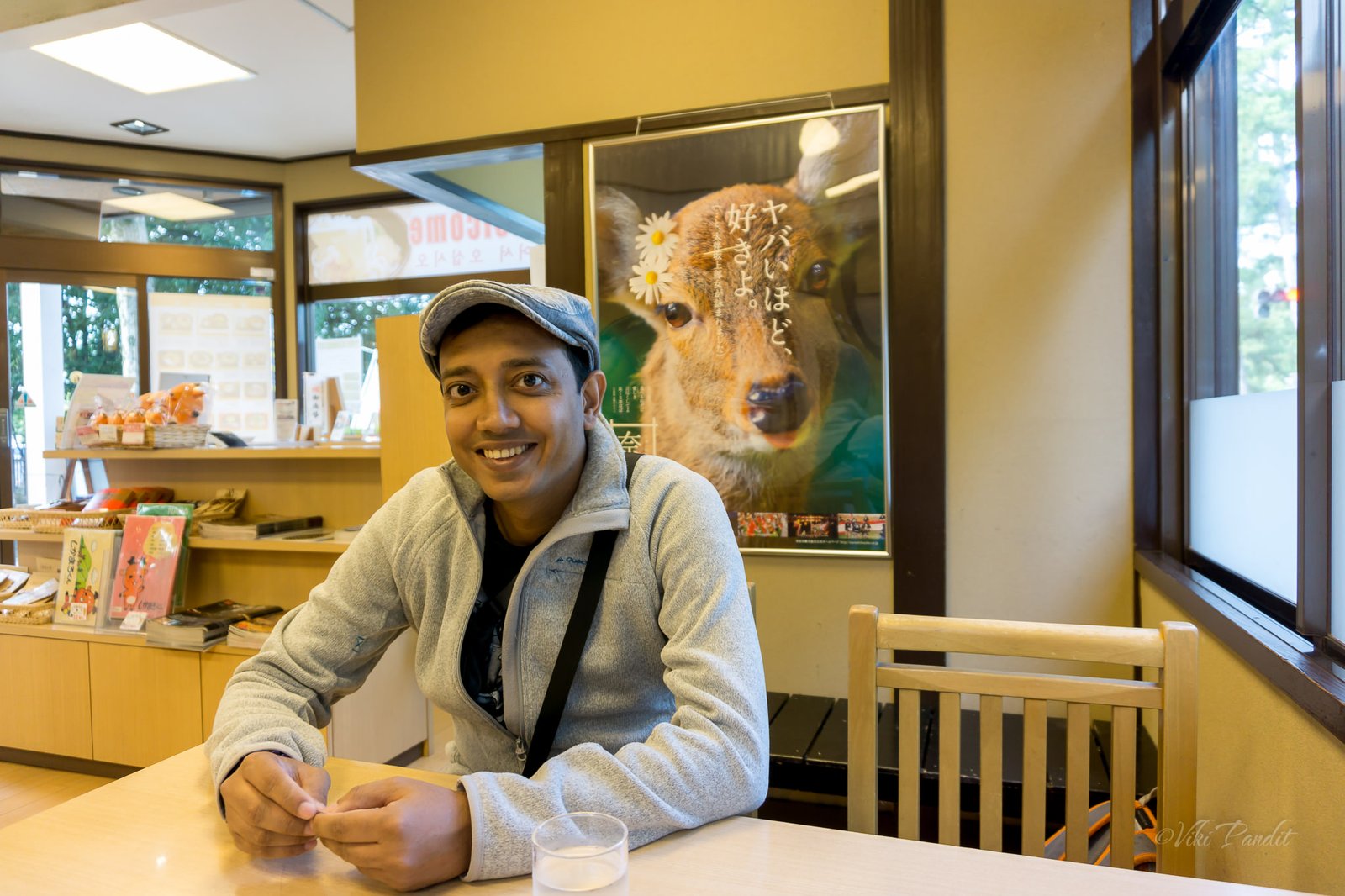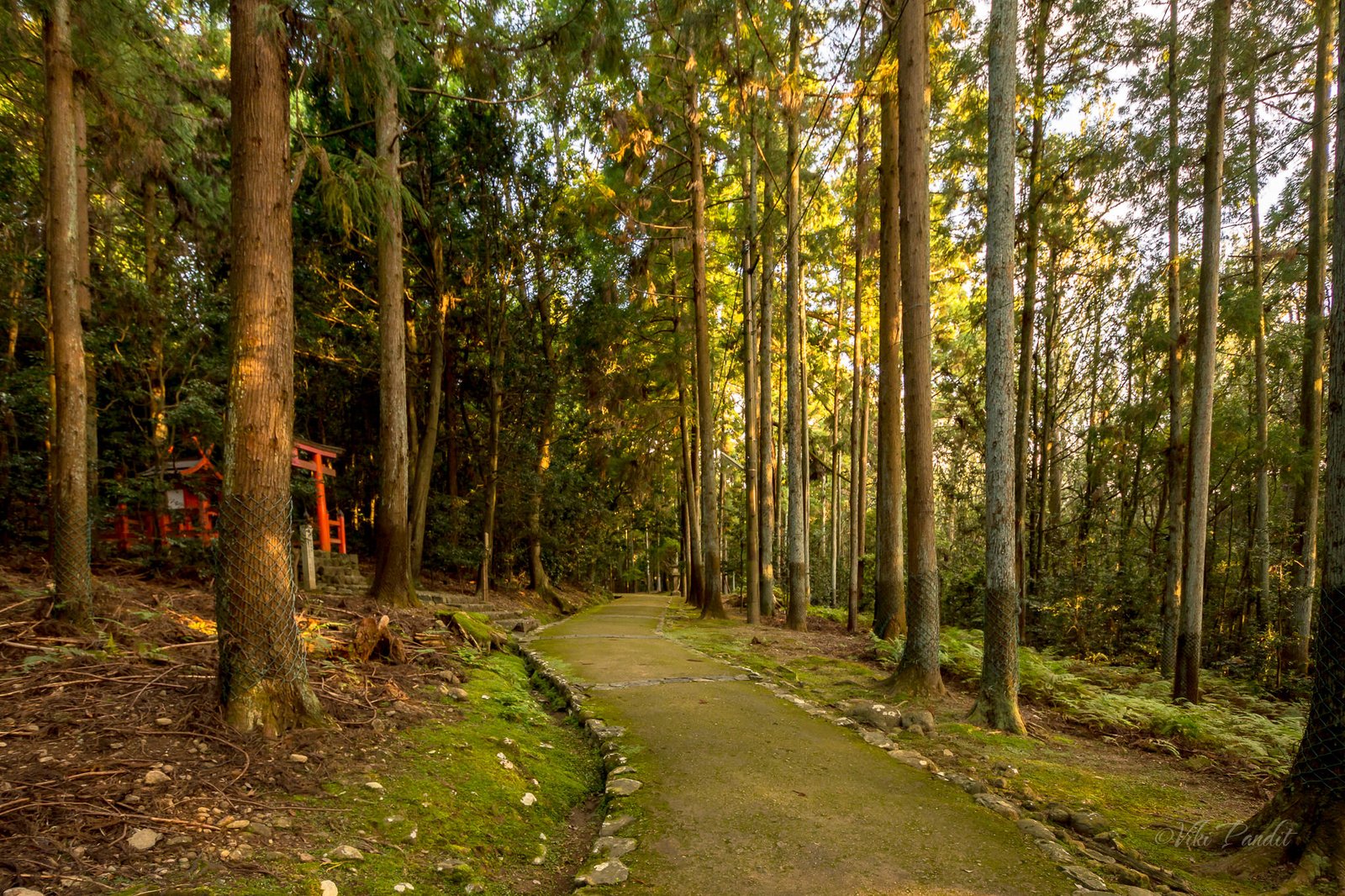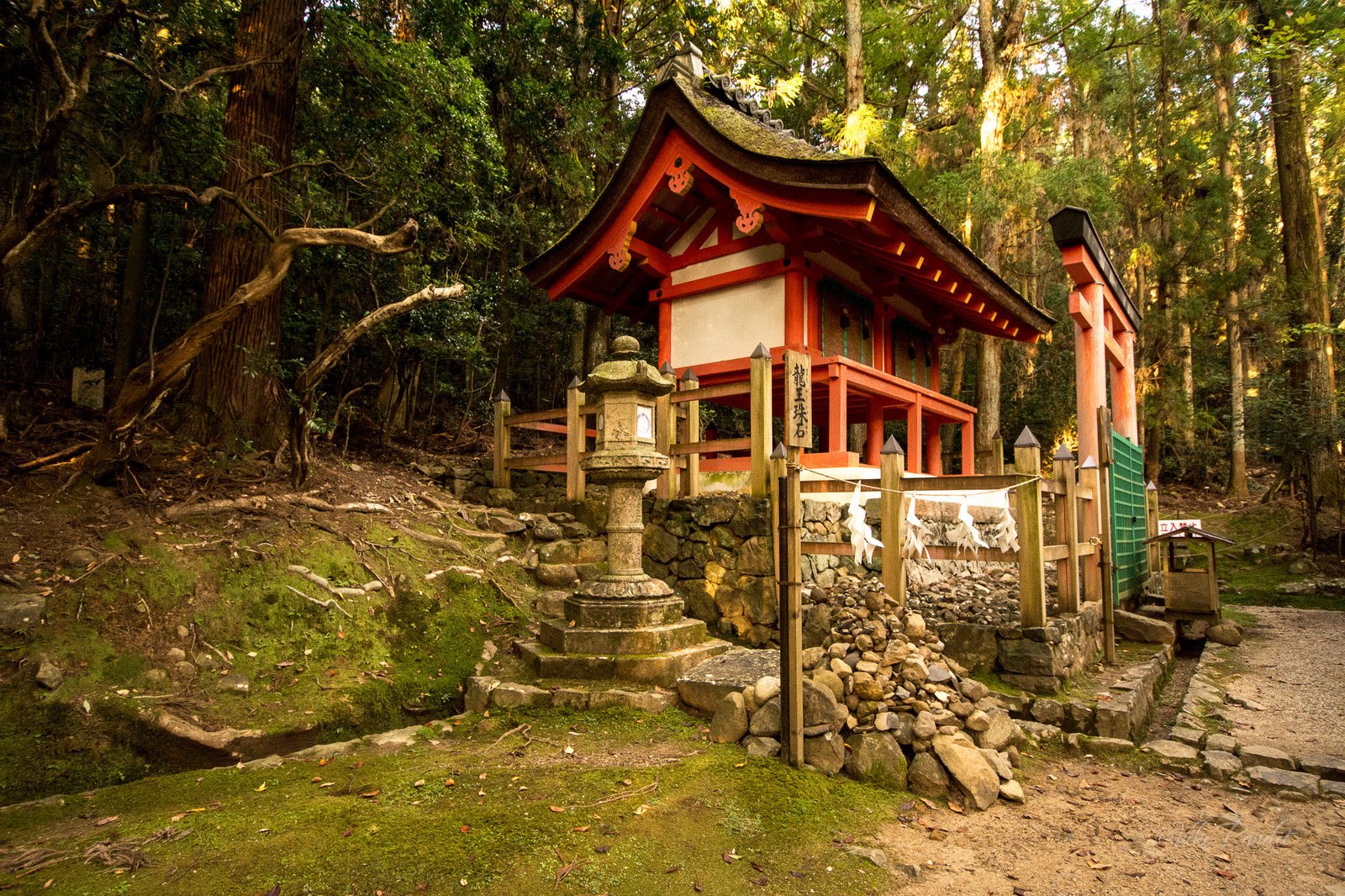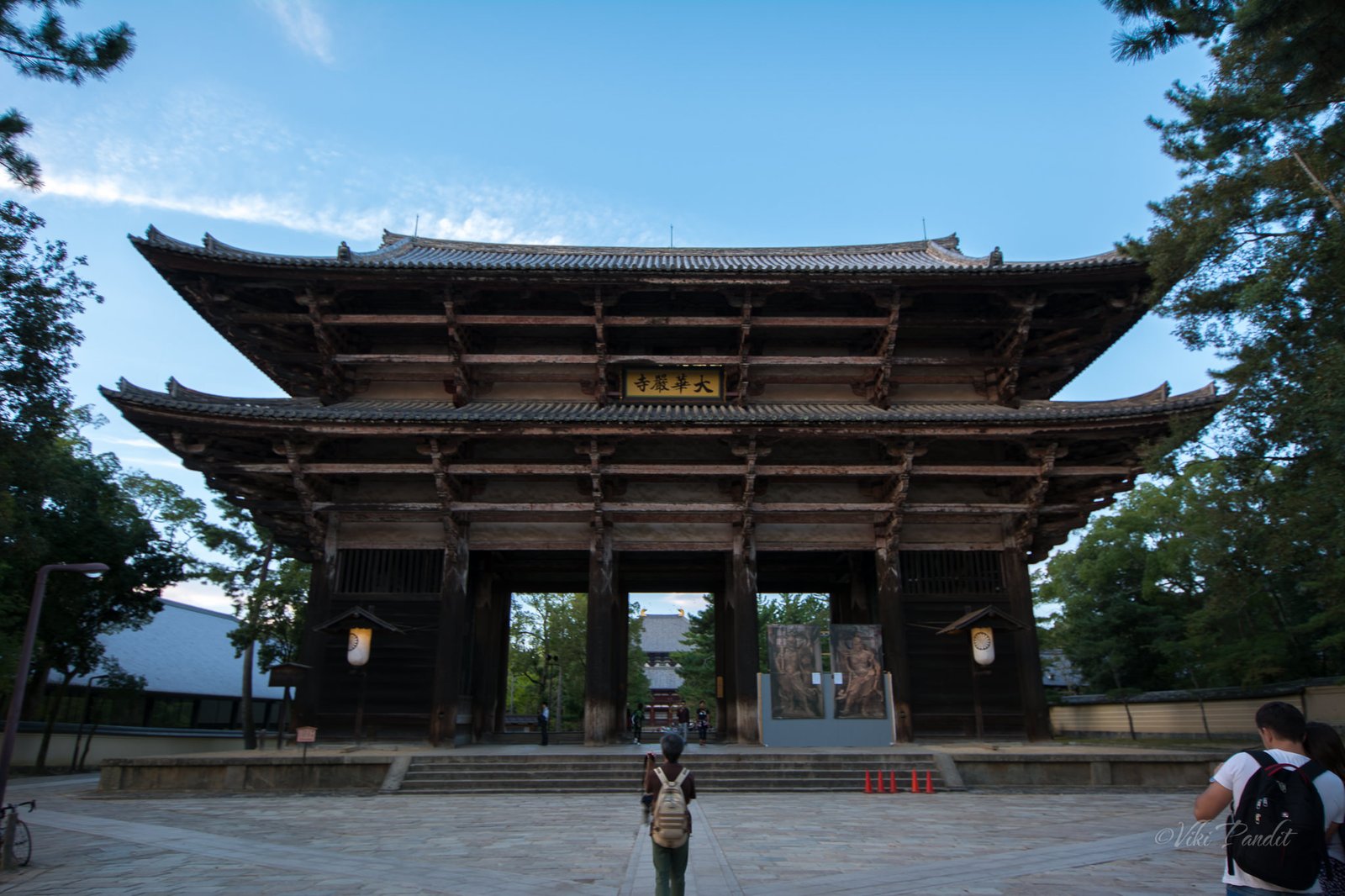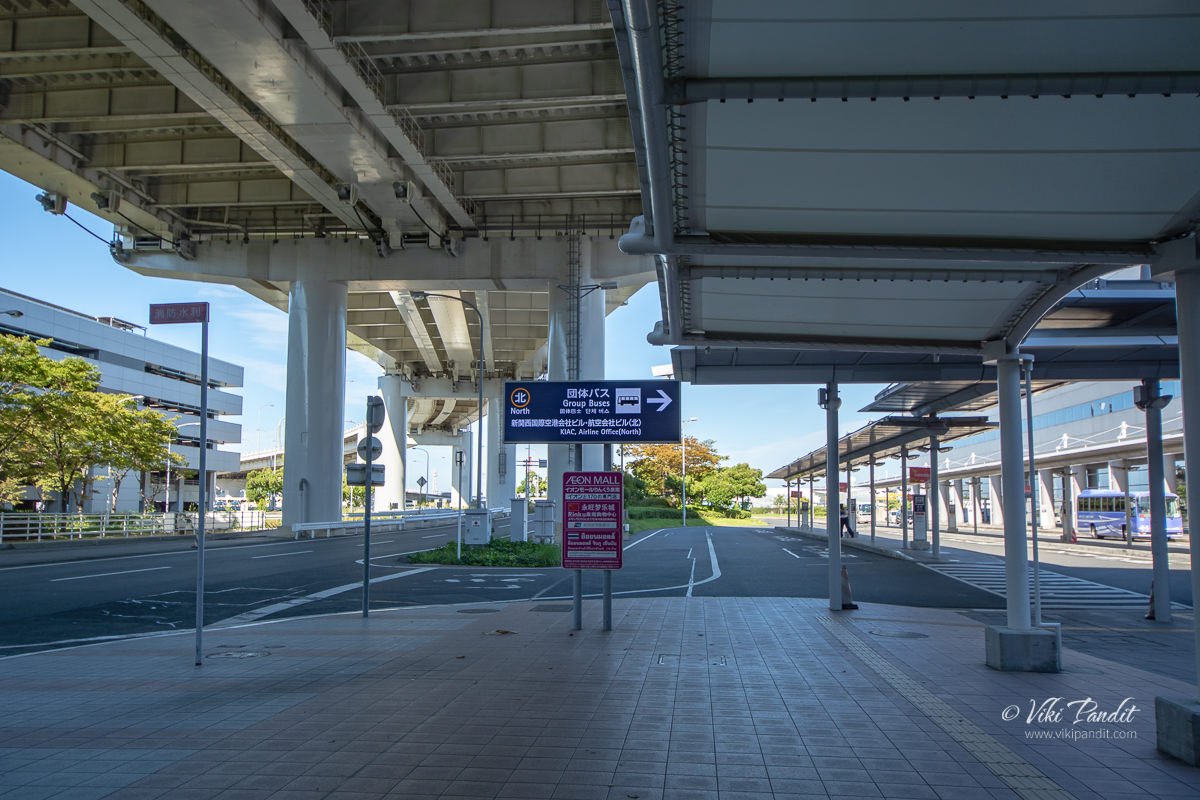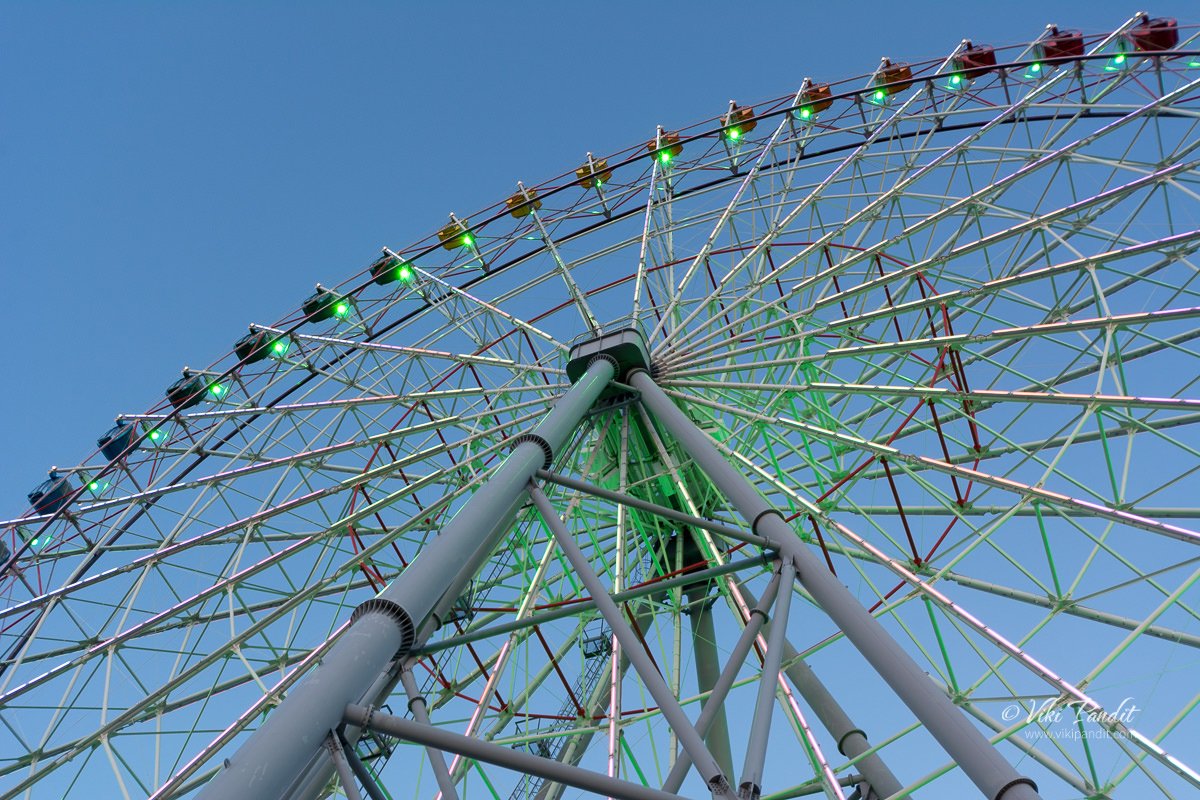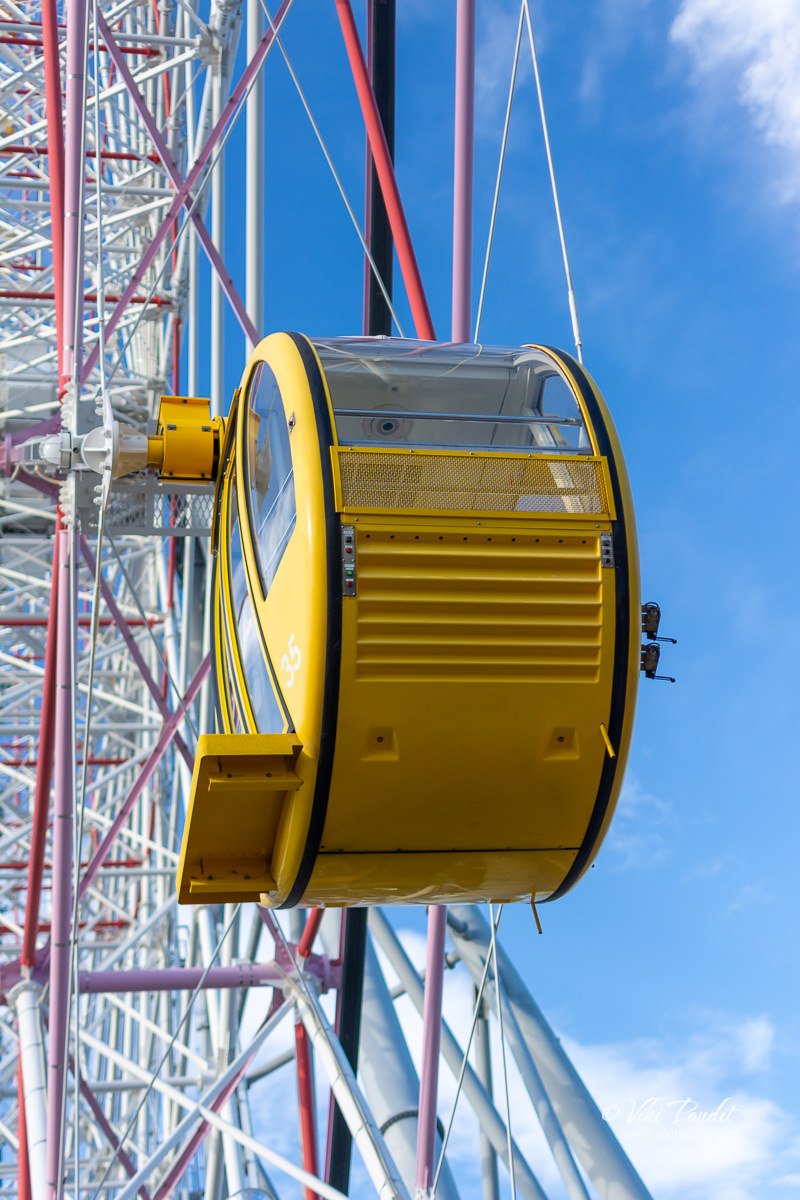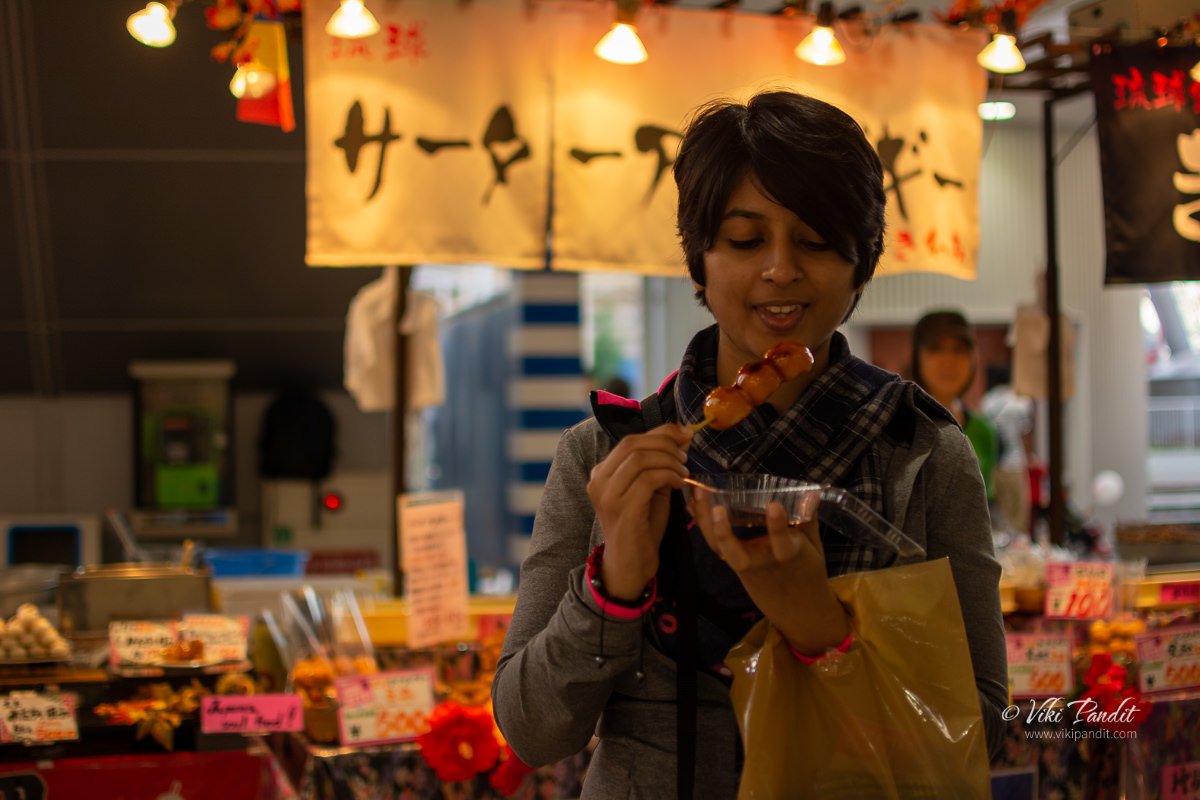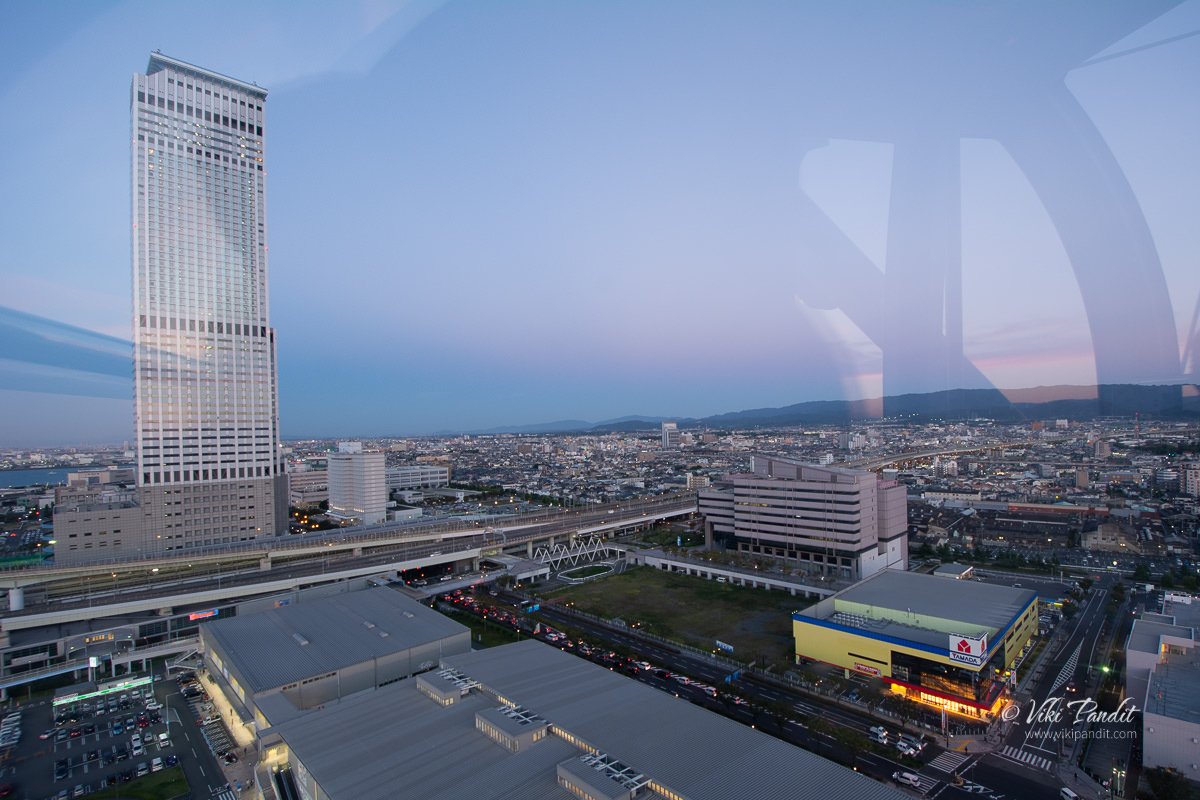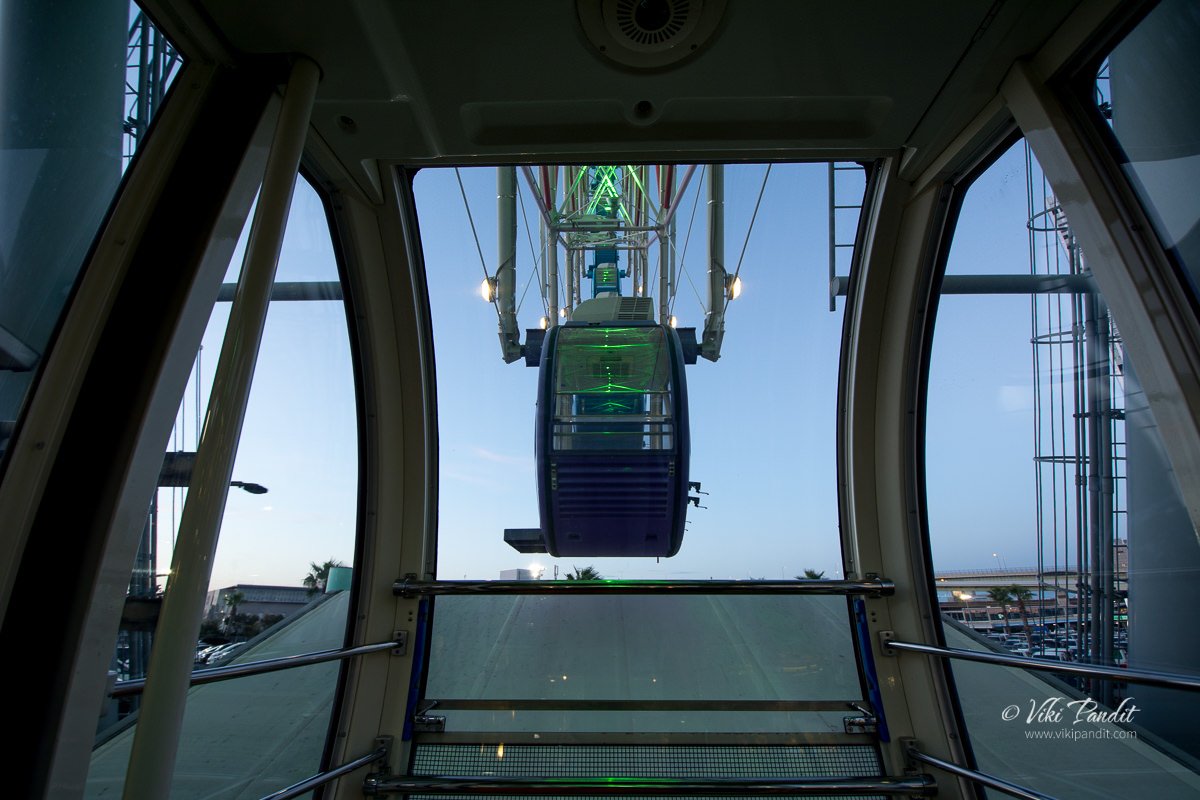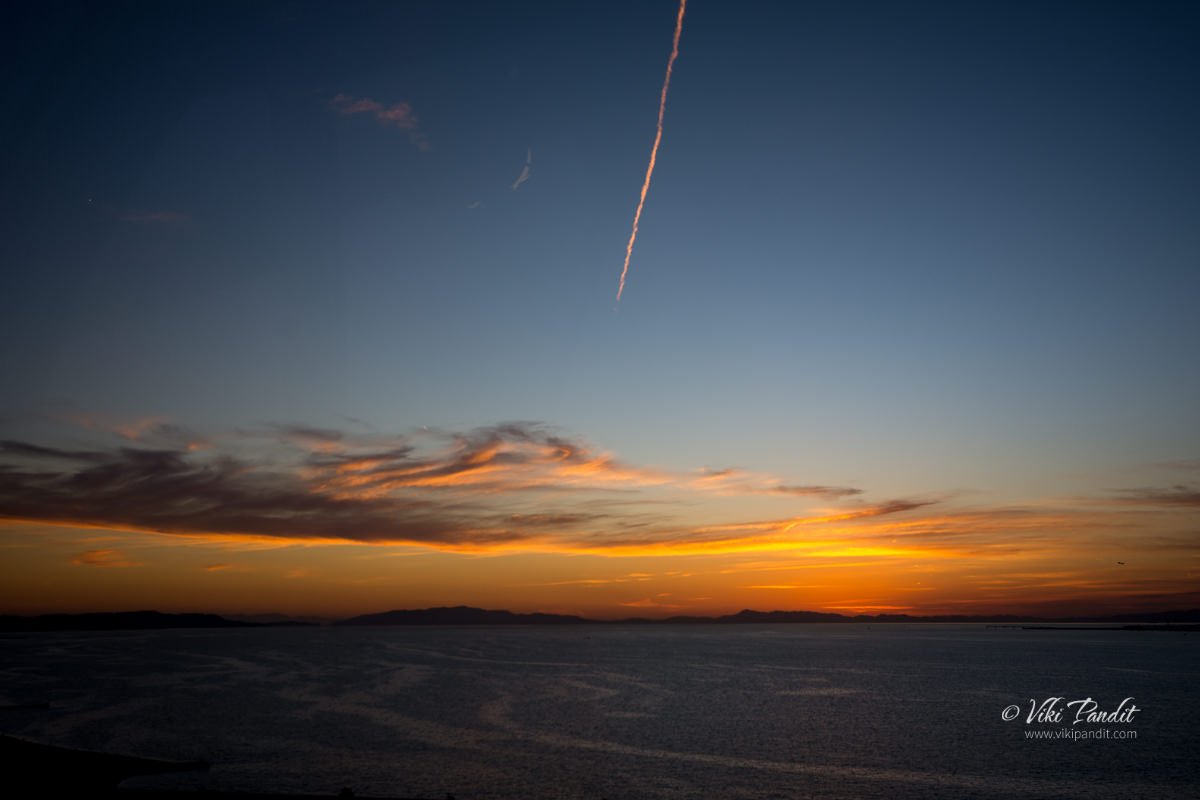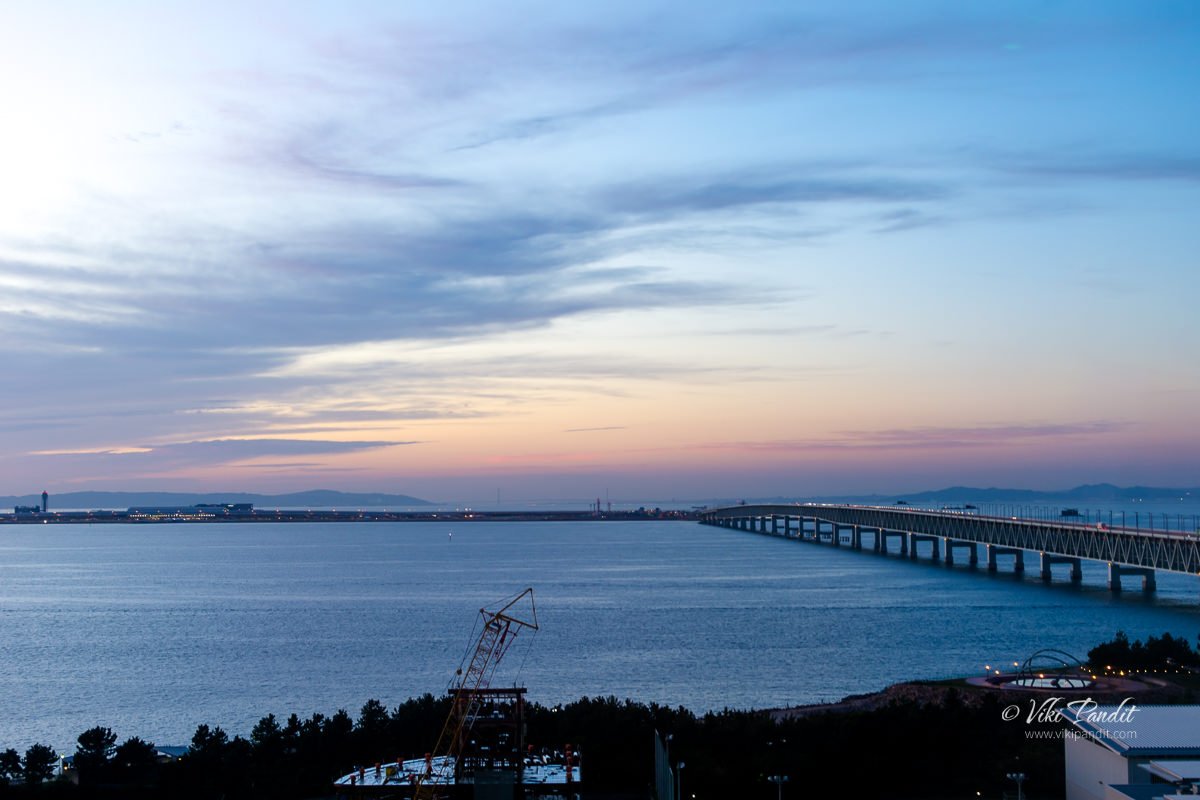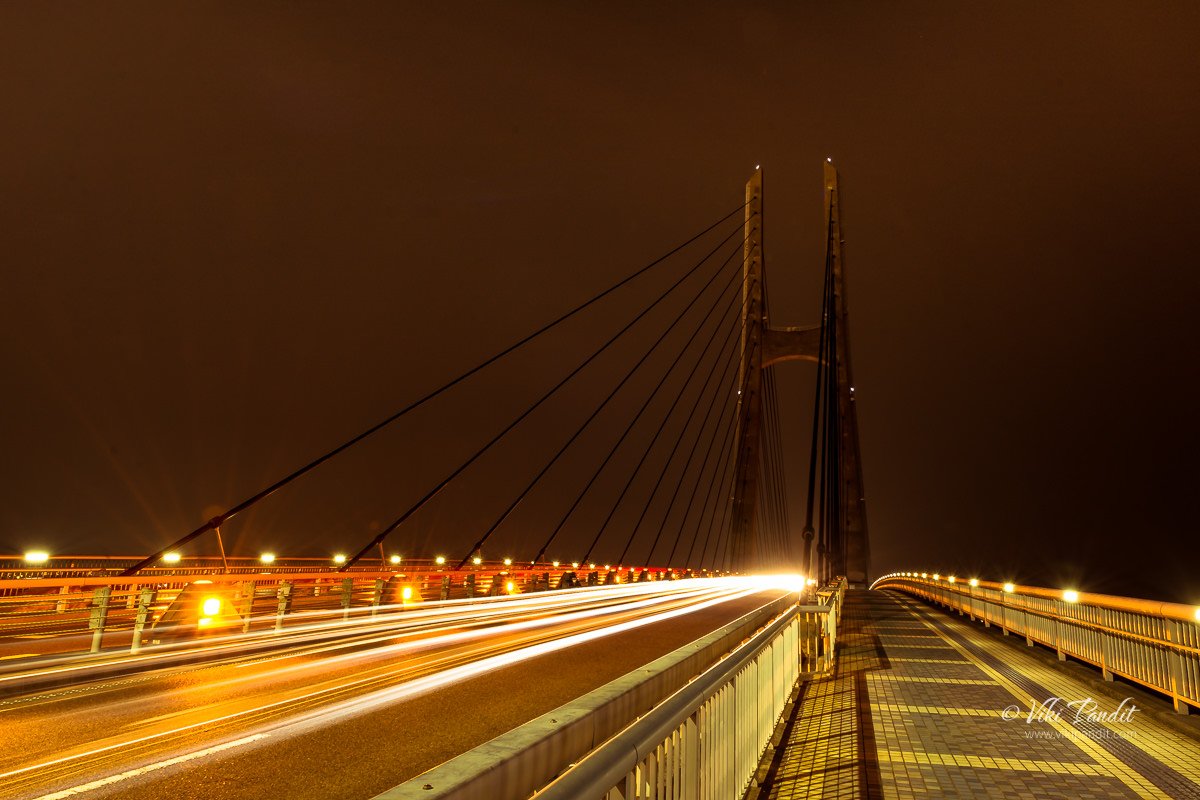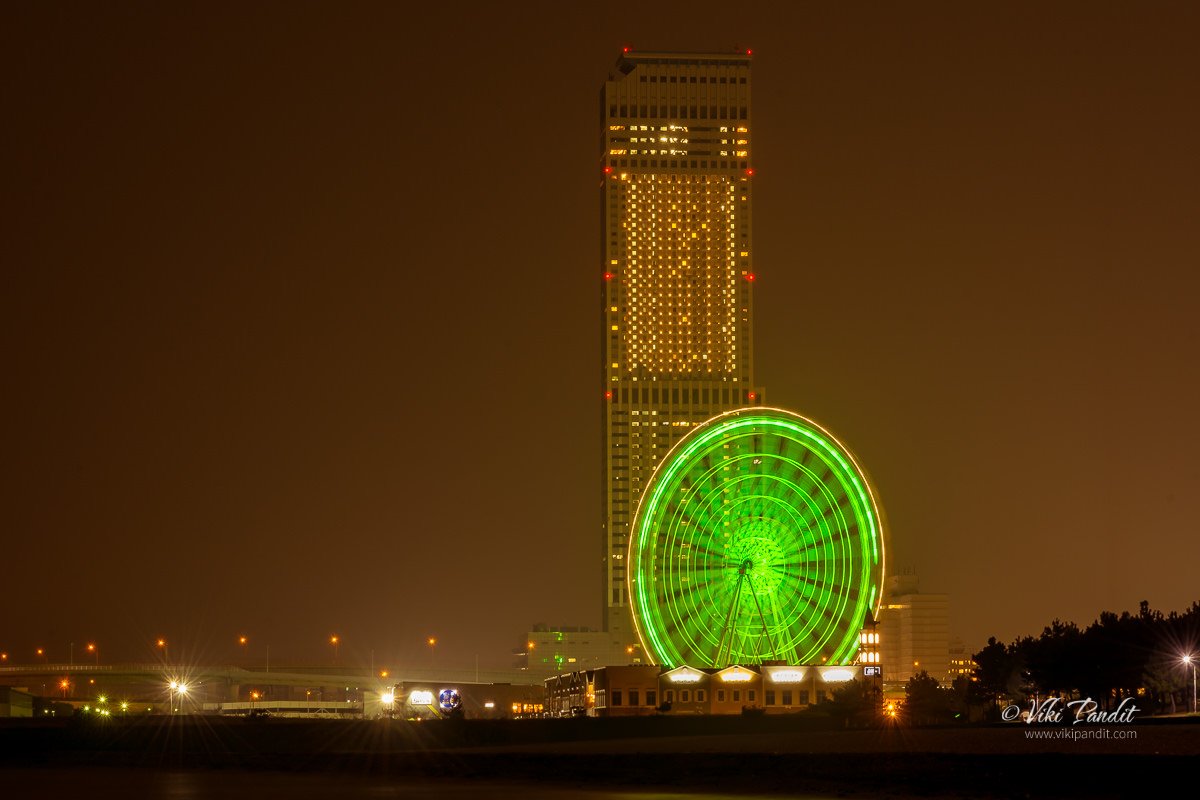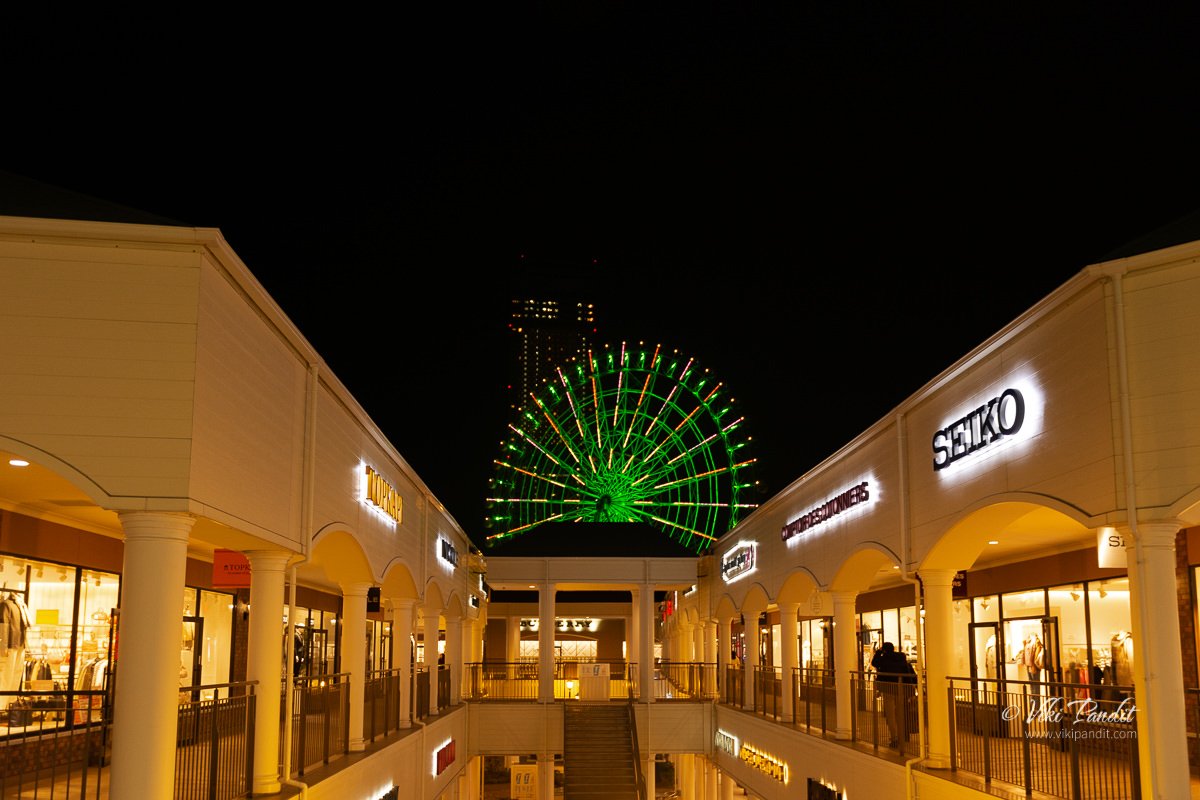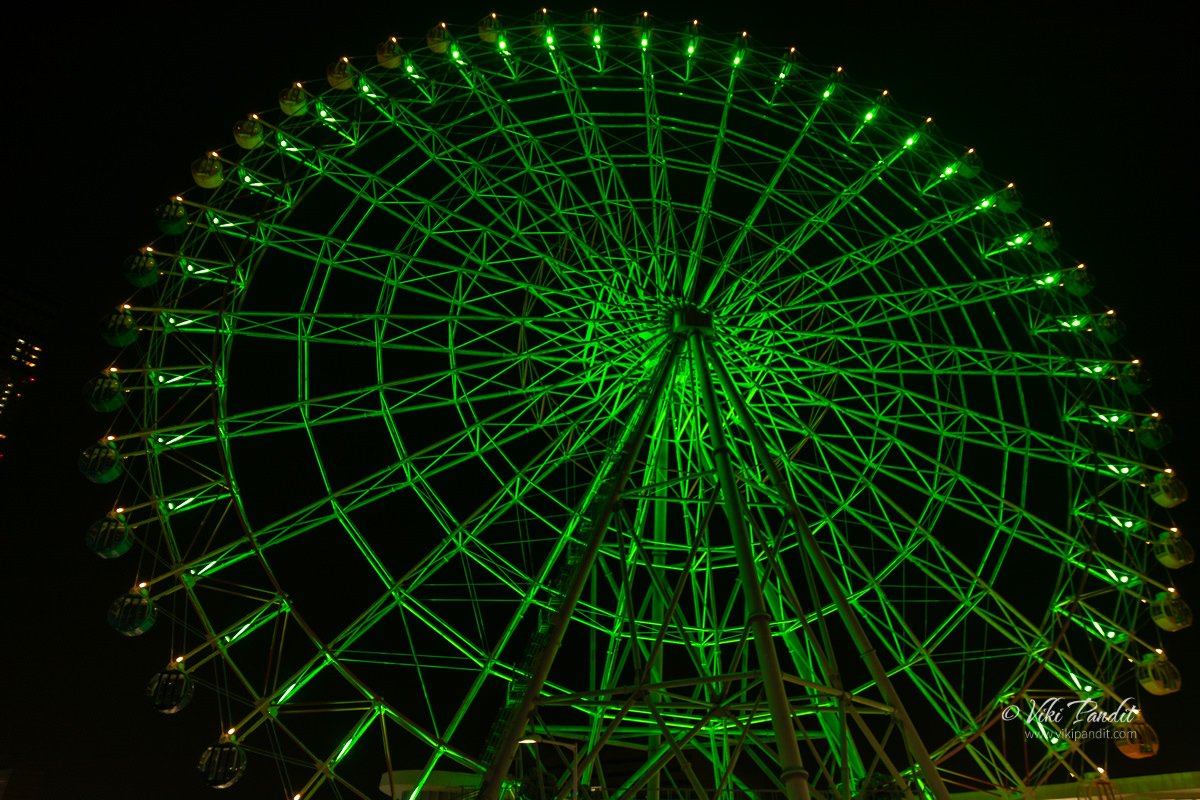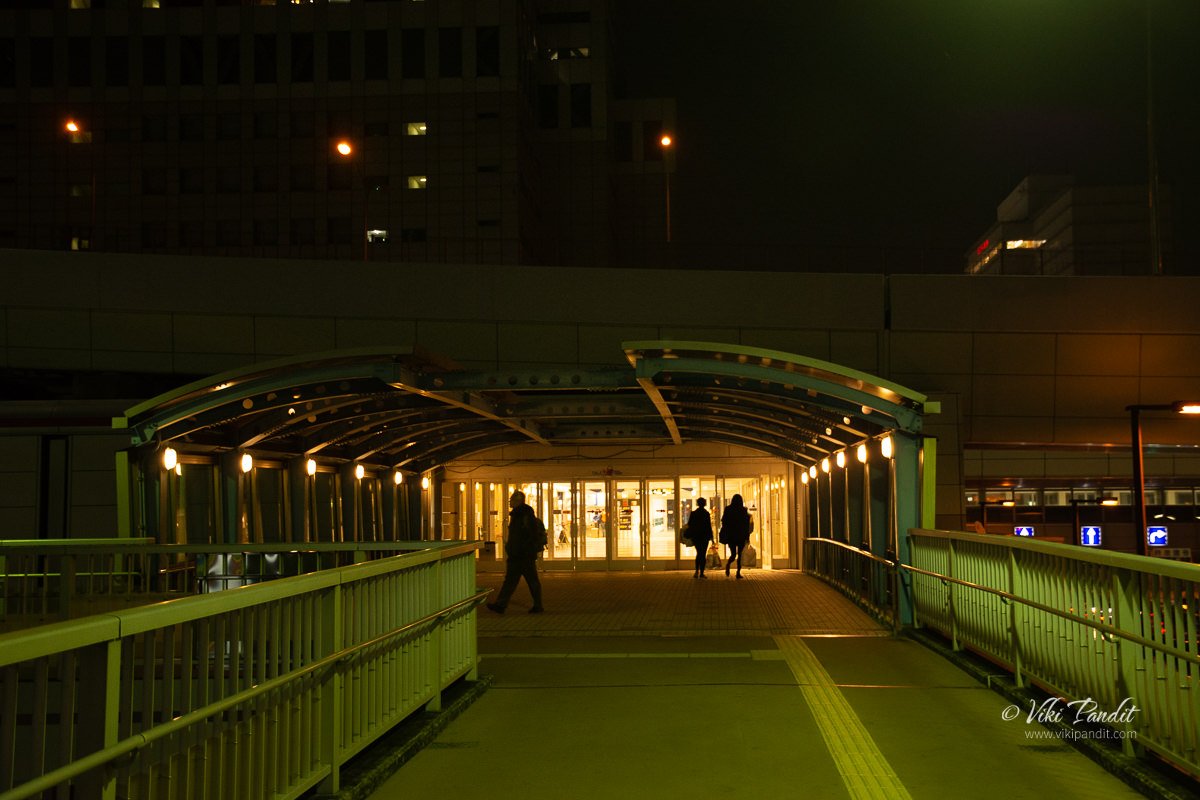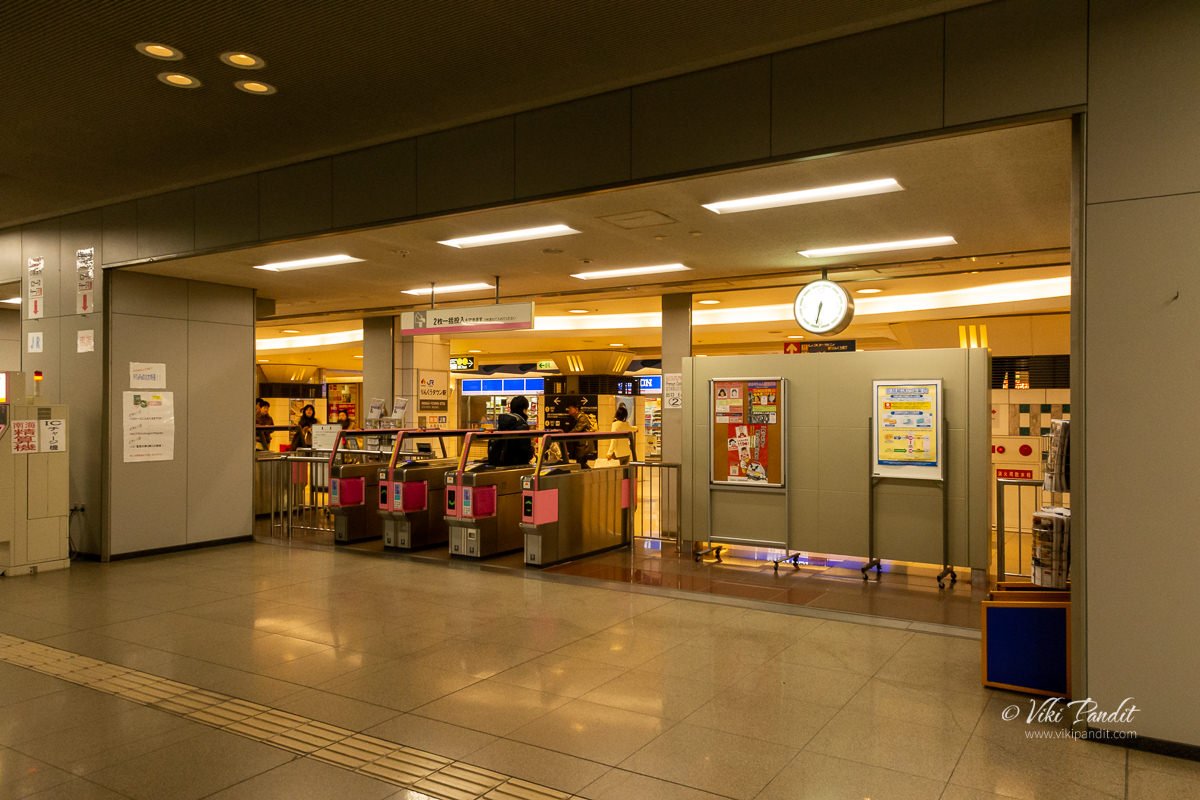After spending a couple of hours in the peaceful gardens of Toshodai-ji, I walked down to Yakushi-ji using Google Maps as my guide. It led me along a narrow path along a Canal. The water flowing in the Canal was sparkling clear. I cannot in my wildest dream think of such clean flowing water in Kolkata (my hometown).
I trudged along the path at a leisurely pace. At the first intersection, I asked a traffic cop for directions who directed me towards the gate of the temple. While walking towards the Yakushi-ji temple, I happened to see a lovely courtyard on my right and I went in to take a look.
Genjo Sanzoin Garan, Yakushi-ji
The signboard was in Japanese and the paper map I had from the tourism office did not contain any mention of this place. At the end of the courtyard was a beautiful gate. As I walked nearer to the gate I saw an admission booth at the end of the courtyard. The guy at the counter was of little help when I asked about the place, but he did understand “Yakushi-ji” and offered me a ticket to go inside. From the ticket, I realized that it was the Genjo Sanzo Complex. Priced at ¥1100, the admission ticket to Genjo Sanzo Complex also includes entry to the Yakushi-ji temple grounds.
It was a working day and thankfully the crowd was a lot less compared to Nara Park
In the center of the walled structure is a two-storey red pagoda. The corridors surrounding the pagoda were decorated with Bonsai trees. Along with the tiny trees, the exhibit also featured some beautiful Ikebana (Japanese flower arrangement) flowers.
Towards the end of the passage, in a covered area, I was found some 6 foot high paintings featuring the various places Hiuen Tsang visited on his journey, that culminated with him reaching Nalanda. Ikuo Hirayama, a famous Japanese-style painter is credited for creating these enriching wall paintings. Photography of the paintings was prohibited.
On my way back I was clicking some photos of the red Pagoda when a Japanese guy, approached me. I don’t recall his name but he was quite friendly and we got into a conversation. I told him I was from India. In his broken English and lot of app translation, he made me aware of the Hiuen Tsang connection. Tsang is also known by the name of Genjo Sanzo.
Hiuen Tsang
The Genjo Sanzoin Garan(薬師寺玄奘三蔵院伽藍) was built in honor of Hiuen Tsang (Xuanzang in Chinese, 602-664) , who traveled to India in around 632 CE to seeking learn more about Buddhism. His travels along the Silk Route is something I studied with great zeal as a child. His visit to India was an important event during the reign of king Harshavardhana. We are much indebted to this Chinese traveler for the valuable accounts he left behind, detailing the political, religious, economic, social conditions of those times.
He spent around five years studying Buddhism at the University of Nalanda. He brought from India about 20,000 scrolls of sutras and dedicated his life to translating about 13,000 of them. No mean achievement. For his contribution, a memorial hall was dedicated to him at Nalanda in Bihar, that I plan to visit someday. Built in 1981, the octagonal hall enshrines some remains (a few pieces of skull) of Hiuen Tsang.
It is also interesting to know how the remains of Hiuen Tsang found their way to Nara.
It was in the midst of Sino-Japanese war in 1942, when the Japanese military found Hiuen Tsang’s remains in Nanjing, China. After intense mediation between the two countries, it was settled that both share the remains and enshrine it in their respective countries. The remains were initially brought to Jionji in Saitama. Some of these ashes were later donated to Yakushi-ji in 1981 when the Genjo-Sanzoin complex was built.
Confirming the way to Yakushi-ji, I made my way towards the 9th century temple. Before leaving, I roamed around the beautiful garden of the Hiuen Tsang memorial. In the garden I noticed a couple of big black ravens, almost double the size of any I have seen before. Their crackling sounds broke through the pin-drop silence of the grounds.
Yakushi-ji Temple (薬師寺)
It didn’t take me long to reach the entrance to Yakushi-ji, it’s just opposite to the Genjo Sanzo Complex. One has to cross the road and go past the admission checkpoint. I had to show the ticket I purchased at the Genjo Sanzoin. The entry to the temple grounds goes through a small building
selling souvenirs and books. You can find many books dedicated to the history of the temple, some if English but mostly in Japanese.
History of Yakushi-ji Temple
Yakushi-ji is among Unesco’s list of “Historic Monuments of Ancient Nara” World Heritage Site alongside Todai-ji and Kasuga Taisha Shrine. The temple is the headquarters of the Hosso sect of Japanese Buddhism. Known as the Temple of Medicine, the construction of Yakushi-ji was commenced in 680 CE on the orders of Emperor Tenmu. It was hoped that the grand temple will aid in the recovery of the Empress from a serious illness at that time.
You might be left bewildered that this huge site was initially constructed in Asuka in south Nara, in the Fujiwara capital.
Unfortunately, during the long term of the construction, Temmu himself died and his wife acceded to the throne. For most parts of the temple, the actual construction was undertaken during her reign. In 697, the dedication ceremony for enshrining the Yakushi Nyorai was held and the temple was opened to the public.
Within just 10 years of its completion, the capital was moved to north of Nara in 710. Following this in 718, the whole Yakushi-ji compound was shifted to the current site.
As you walked into the compound, the first thing you will notice is the Kodo hall to your right. A few steps ahead on the right you will find a small building with a huge bell.
Toindo Hall of Yakushi-ji
I kept walking down on the straight path towards the Toindo Hall. Before the Toin-do Hall a temple existed here known as the Tozen-in Temple, built under the instruction of Imperial Princess Kibi during the Yoro era (717-724) to pray for the soul of her mother, Empress Genmei. The present Toin-do Hall was constructed in 1285 during the Kamakura period.
The standing statue of Sho-Kannon (Aryavalokitesvaraand from the Hakuho Period, 645-710), the Honzon of this hall, is enshrined inside Zushi (a cupboard-like case with double doors within is an image of Buddha, a sutra, or some other revered object kept at a temple) in the hall. The statue is said to retain the influence of Indian sculpture style of the Gupta Period (350-650) In the year 1733, during the Edo period, the hall was reconstructed, but facing West this time. The hall is the oldest Zen hall in Japan.
The hall also contains some Nio statues. These photos might be a bit blurry as photography was forbidden inside the hall and I used my heavy-weight 80-400 mm lens to take these.
The below idol of Jikokuten, is part of the four heavenly kings. According to temple records, it is said to be created in 1289 CE and painted in 1296. The idol poses fiercely with its feet on devils while protecting forcefully the teachings of Buddha.
Kondo Hall of Yakushi-ji
I circled around the Toindo Hall and found myself at the front gate of the Yakushi-ji temple. Yes, its a bit weird but the main entrance to the temple grounds is actually at the back.
At the gate you can see two huge warrior statues guarding the entrance on both sides. Niō (仁王) or Kongōrikishi (金剛力士) are two wrathful and muscular guardians of the Buddha standing at the entrance of most Buddhist temples in Japan.
These Nio guardians have their own interesting story. If you wish to know more, read here about the Nio Guardians.
The main hall referred to as Kondo is characterized by two illustrious pagodas on either side. The Hall houses a bronze Buddha from 697 AD. The Yakushi Nyorai, or Healing Buddha, is seated between two attendant Bodhisattvas, Nikko Bosatsu (of the sun) to the right and Gakko Bosatsu (of the moon) to left. The engravings on the pedestal where Buddha is seated seems to be a from a combination of cultures including Greece, Persia, India & China. Originally covered with gold, they now appear black due to the fire in 1528.
The statue was originally cast during the reign of Emperor Temmu in 680 and completed by Empress Jito in 697. It is the Buddha of healing who vowed to cure the disease of the mind and the body.
Note: Generally Yakushi Nyorai is depicted with a medicine pot on its left hand, but the statue in this temple does not have it.
West Pagoda at Yakushi-ji
Yakushiji temple grounds contains two pagodas. Unfortunately the East Pagoda was all covered up for repairs which is going to last till about April 2020. The East Pagoda is a National Treasure from the Hakuho Period. It is about 34 meters high. The East Pagoda (Toto) dates from around 698 AD. This pagoda, miraculously survived the fire that destroyed Yakushi-ji in 1528. It is the only surviving architecture of the Hakuho Period in Japan.
While the East Pagoda is black in color, the West one is red. The original West Pagoda burned down in 1528 and was rebuilt in 1980.
Pagoda means a grave in the Pali, the ancient Indian language
Daikodo Hall of Yakushi-ji
I walked around the back towards the Lecture Hall. The Kodo (Lecture Hall) was rebuilt in 1852. It is the largest hall in the temple grounds.
This hall enshrines Miroku Triad from the Hakuho Period flanked by two Arhats. The Miroku Nyorai is flanked by Houonrin Bosatsu (left) and Daimyoso Bosatsu (right) as you face it.
Shaka Judai Deshi Jo (Sakyamuni’s Ten Great Desciples)
Behind the sculpture of Buddha, with a thin wall dividing the room, are kept 10 idols of Arhats. The Arhats are said to be the followers of Buddha who have followed his Eightfold Path and attained the Four Stages of Enlightenment and are free of worldly cravings. These 10 Arhats formed part of the First Council in Rajagrha, where they vowed to renounce material life in order to devote themselves more effectively to the relief of human misery.
These statues were sculpted by Shinya Nakamura from Kagoshima Prefecture.
Yakushi-ji was burnt down and destroyed many times by fires, wars and natural disasters. However the biggest damages were caused by fires – first in 973 and then again in 1528.
Today only the Yakushi-ji triad in the Kondo, the Sho-Kannon in the Toindo and the East Pagoda recall the grandeur of its original features.
It was already 4:30 pm and the temples around Nara generally shut down after 5 pm. I took some more pictures of the west pagoda and then walked back to the souvenir stalls.
At the souvenir shop I purchased a photo book, containing photographs of the sculptures at Yakushi-ji. The book contains pictures of many age-old figurines that are rarely displayed. I also wanted to buy a bunch of incense sticks, but they were way too expensive at ¥2000 a bunch.
Before moving out, I asked the person at the counter, how to go back to Kintetsu Nara. He directed me towards the train station nearby, but I was still not too sure with trains, and decided to find the nearest bus stop. I thanked him with a smiling “Arigatou.” I believe one can get away, around Japan with just these three words: Arigatou, Sumi-masen & Gomen-nasai… and not to forget, a Smile 🙂
I walked towards the train station looking for the nearest bus stop. I looked for the time-table at the bus stop, but it wasn’t very clear. A girl, probably also waiting for the bus, asked me about JR Nara Station. I told her I was myself going back to Kintetsu and they were in the same route.
We decided to walk back down the road towards the canal to Toshodai-ji. At Toshodai-ji we asked an elderly lady and she pointed us towards the correct bus stop. We waited there at the stop for a few minutes, along with some other tourists before the bus came along and drove us back to our destinations.
Yakushi-ji at Night
If you wait around a bit for the darkness to set, you can also see the wonderful image of the West pagoda lit up by the bulbs inside the Yakushi-ji complex. The summit of the Pagoda, called Water flame lights up in bright golden as the evening slips into the night.
Yakushi-ji has a lot of history. It is one of the seven large temples in Nara that includes like Todai-ji, Daian-ji, Saidai-ji, Gango-ji, Horyu-ji and Kofuku-ji. I was disappointed at first, not to have seen the black pagoda, but still the grounds are a great place to roam around and witness the moments of glory of Nara.
Thanks for reading. Please leave me a comment if you liked the post or follow my story as I visit one the most overlooked temple at Nara Park – Kasuga Taisha.
680 CE near Kashihara. Yakushiji was originally constructed in Fujiwara-kyo south of Nara (present day Kashihara city), and was finally completed in 698. The temple was moved to its present location in 718, after the capital was moved to the north of Nara in 710.
8:30 – 17:00 (last admission at 16:30)
Only Yakushi-ji: Adults: ¥800
Yakushi-ji with Genjo Sanjo-in: Adults: ¥1,100
Genjo-Sanzoin is opened only from Jan.1-5, Mar.1-Jun.15, Sep.16-Nov.25
yes, please go here: http://www.nara-yakushiji.com/

